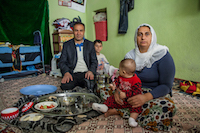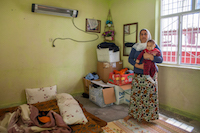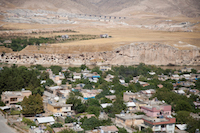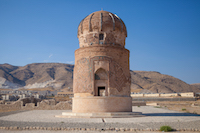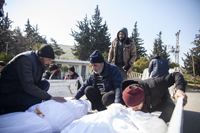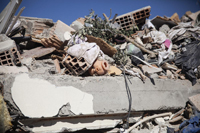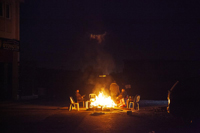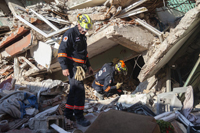
Fatma was eating with her husband, Abdulkadir, her five children and extended family, on a Sunday when a bomb went off. The shrapnel broke the wall, took off Abdulkadir's niece's head, sending her body flying through the room and making a hole in the wall opposite. Everyone passed out from the gases drifting from the bomb's casing. May 2017 for Deutsche Welle.

Fatma's family are among the 24,000 displaced from the town of Sur in Diyarbakir in the southeast of Turkey. In July 2015, a ceasefire ended between the Kurdistan Workers' Party (PKK) and the Turkish state, escalating into a war in the heart of the cities of the east. This resulted in at least 368 unarmed civilian deaths across the region, according to an Amnesty International report. Fatma's current house is half the size of her destroyed home. The whole family sleeps in one room.
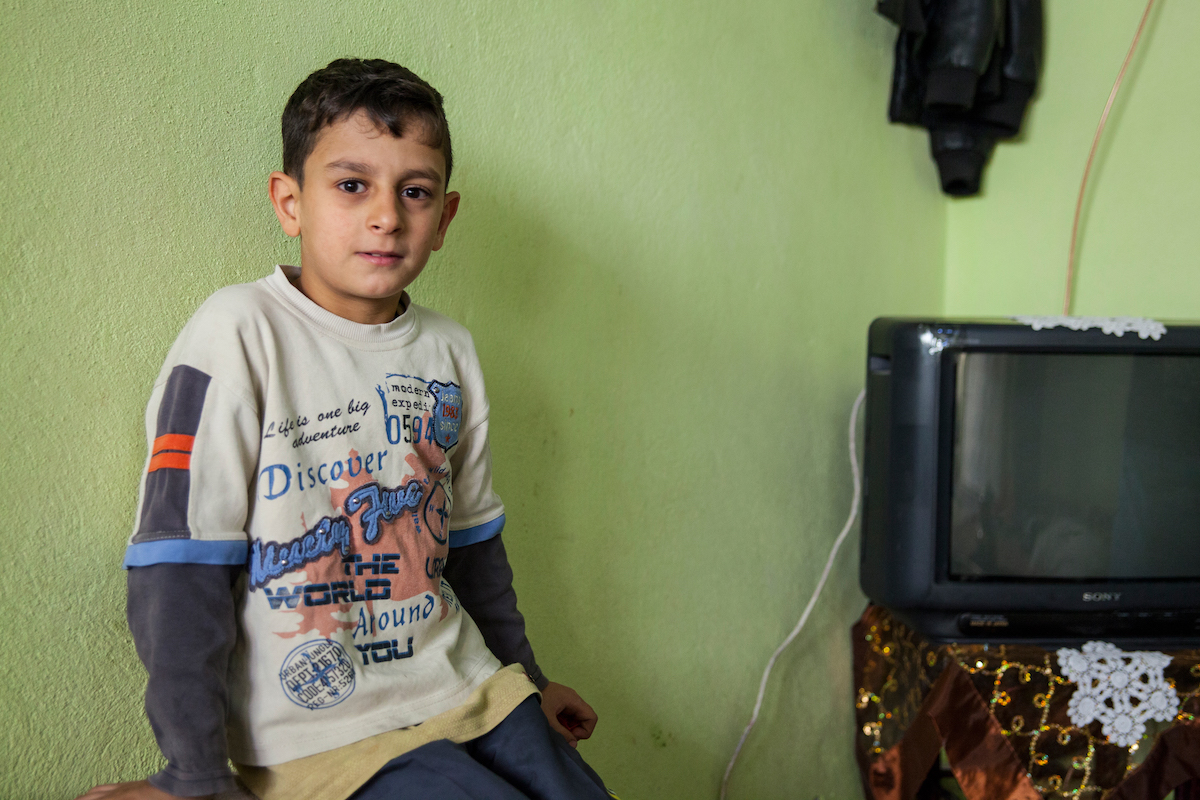
Still suffering from trauma, Fatma's son is shy and quiet. The family is struggling to make ends meet after losing their home in the war, now having to pay rent and provide for five children.
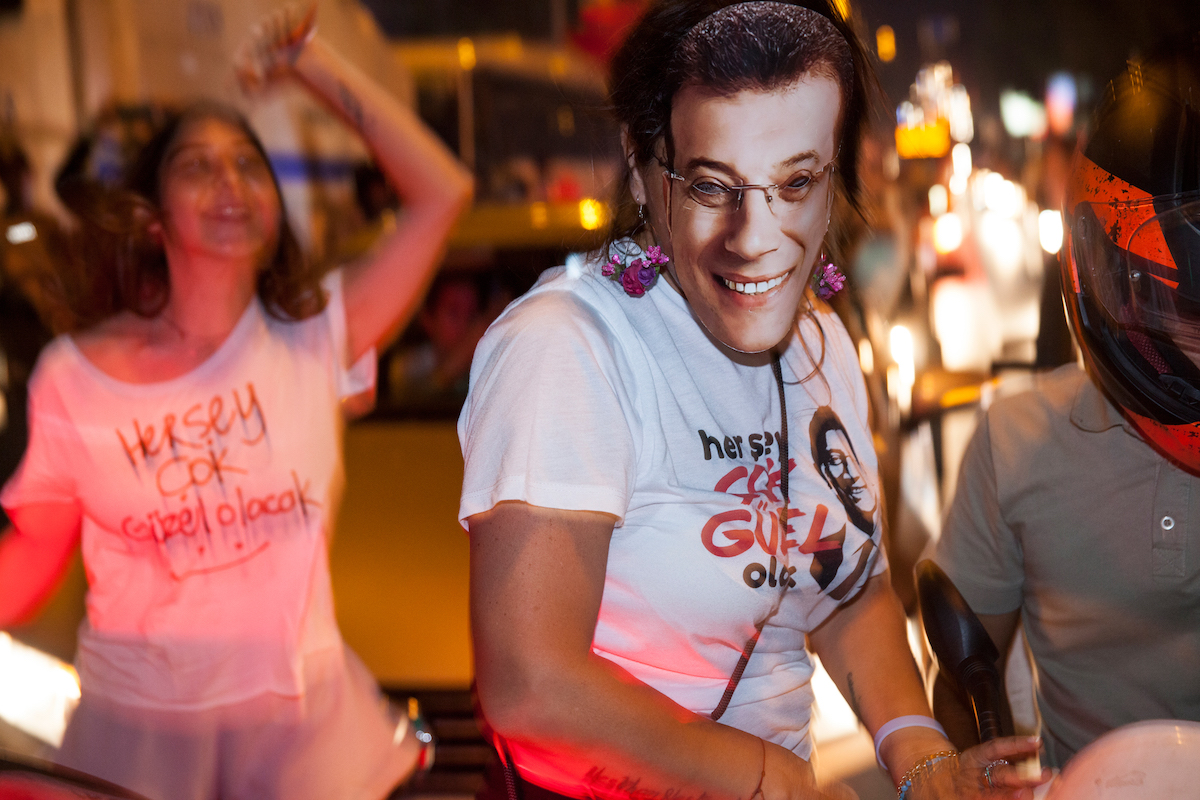
Thousands of people took to the streets of Istanbul following an historic local election rerun which saw opposition CHP candidate Ekrem Imamoglu win the mayoral vote for Istanbul with a 10% lead. Imamoglu promised to lift residents out of poverty, and initially won the election on March 31 before the Election Board cancelled the counts. June 2019 for Al Jazeera.
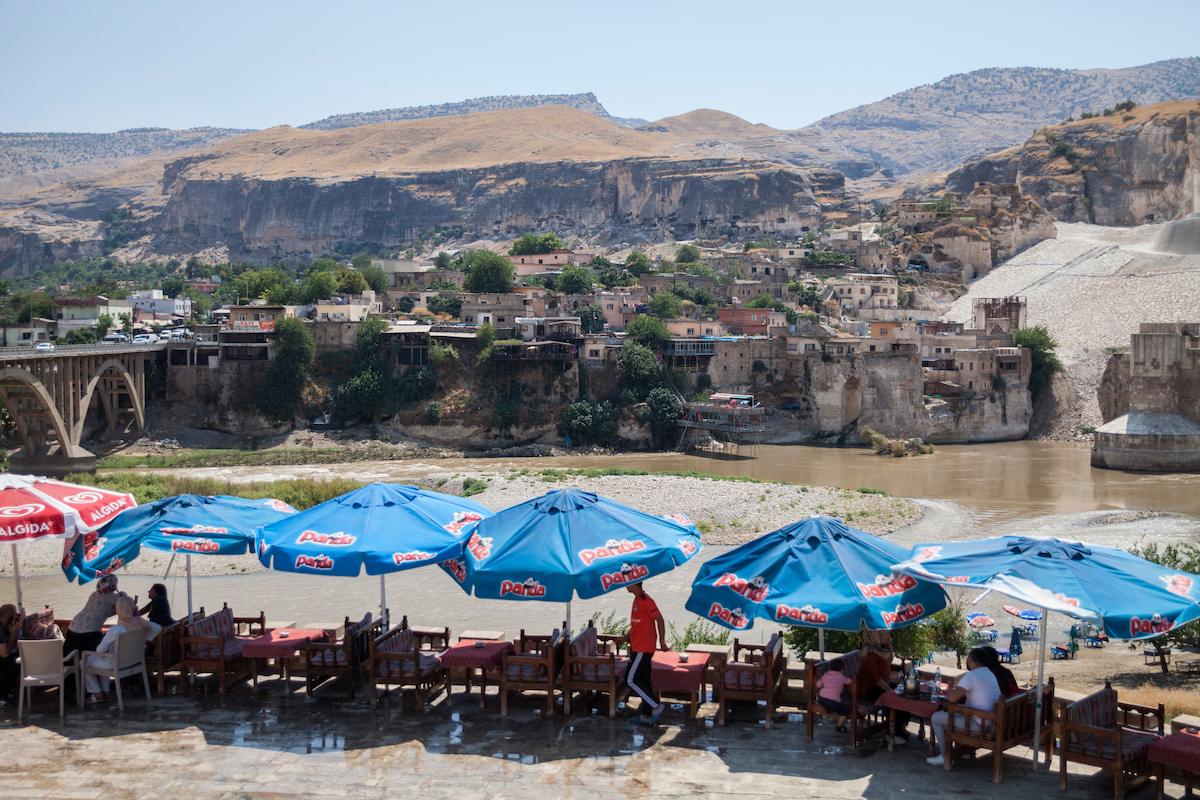
The beauty of Hasankeyf is marveled by those who sip tea on the banks of the Tigris River in southeast Turkey. Hasankeyf is thought to be one of the oldest continuously inhabited settlements on Earth, dating as far back as 12,000 years and containing thousands of caves, churches and tombs. The Turkish Government would flood the ancient city just months after the photo was taken to make way for the controversial Ilisu dam project. September 2019 for The Guardian.
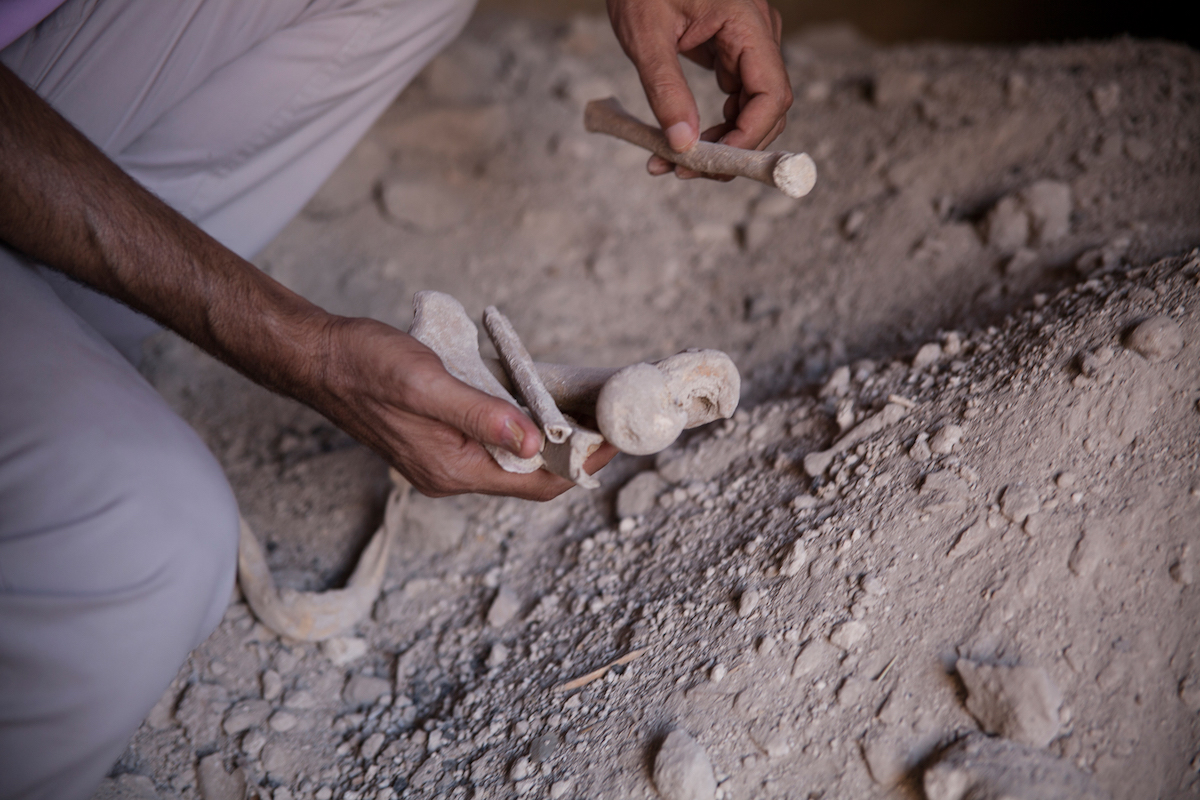
Human bones including a tail bone and a piece of skull now lay in the open of a tomb in Hasankeyf, unknown how old they could be.
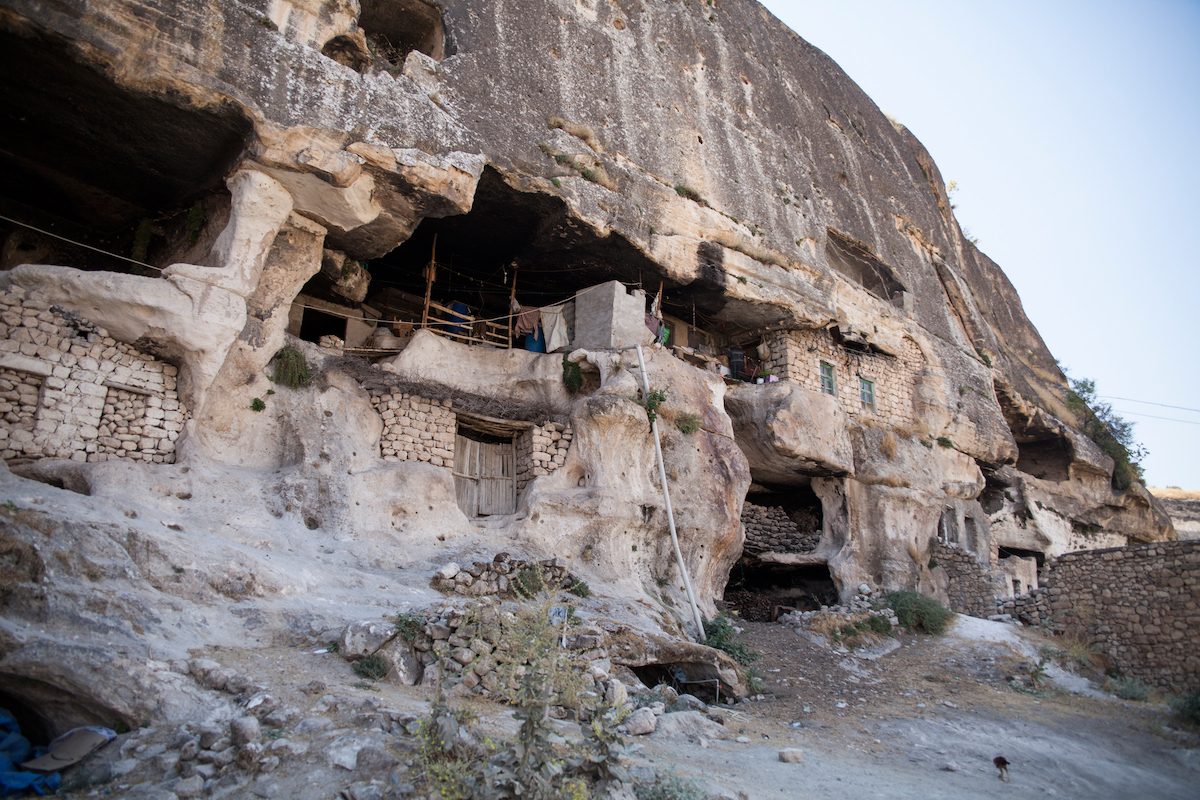
Many residents of Hasankeyf still live in caves as their ancestors did.

A section of Hasankeyf village - the caves seen on the bank of the river were the first caves to be made in ancient Hasankeyf all connected with a tunnel.
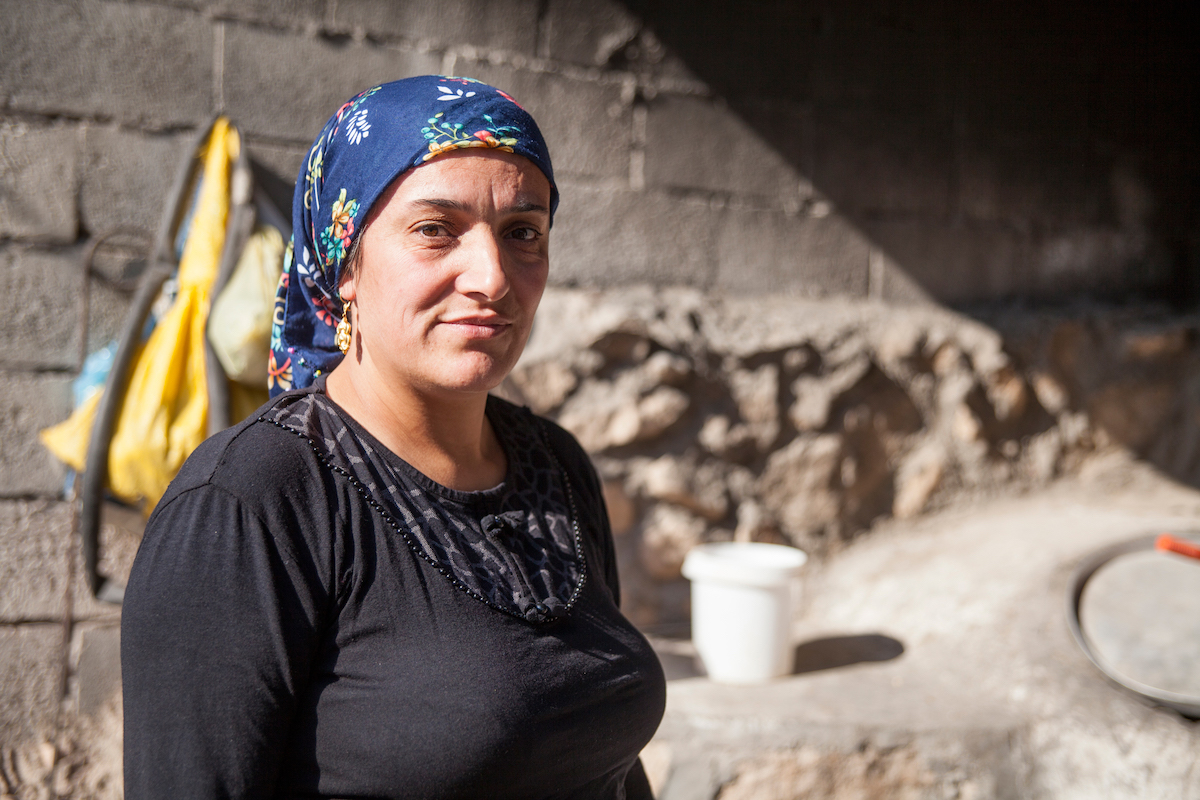
Hediye Tapkan, 38, and her family had wanted to renovate their house and extend their fig groves though have been stalled by the dam project. They will be forced to move.
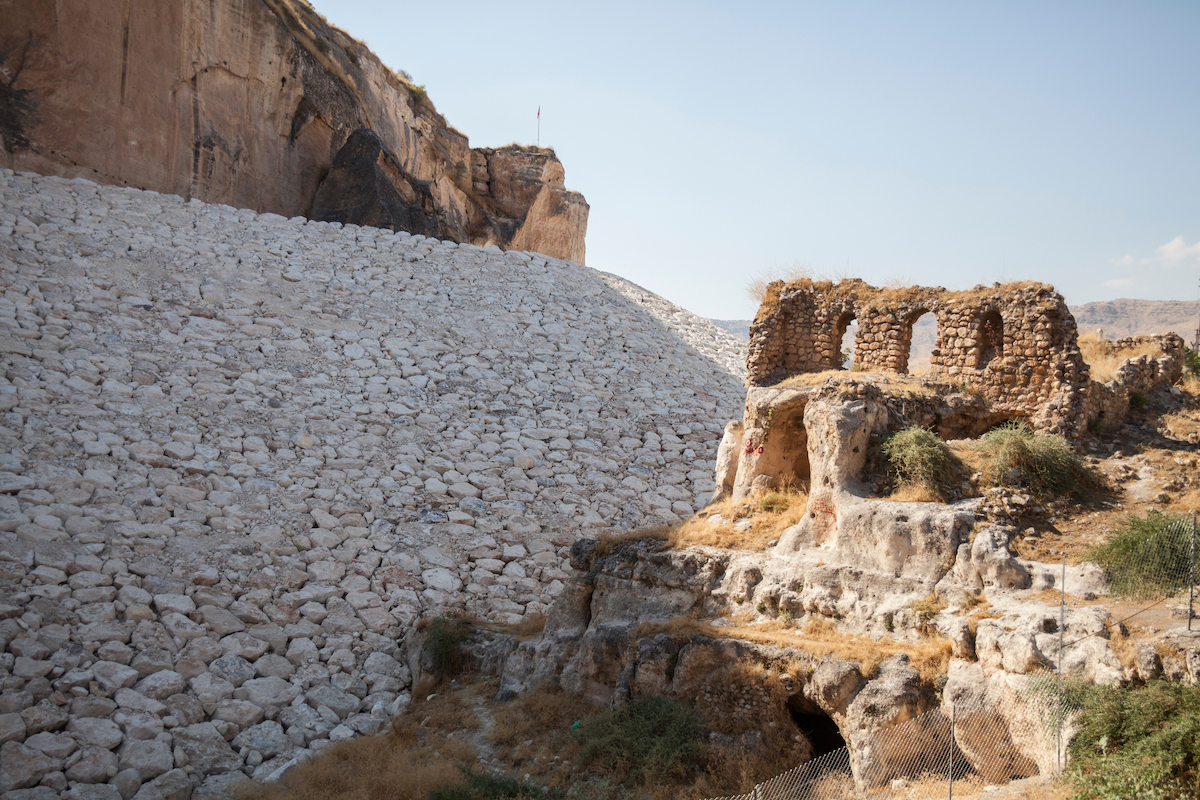
In preparation for the opening of the Ilusi dam, and subsequent flooding of Hasankeyf, a portion of historical caves have been filled in and the Grand Bazaar (R) has been partially destroyed.

A tomb from the 15th century weighing over 1000 tonnes was moved from its place in Hasankeyf village to just 3km away to stand alone near a new settlement. It is one of just eight historical monuments that were saved from the dam project.
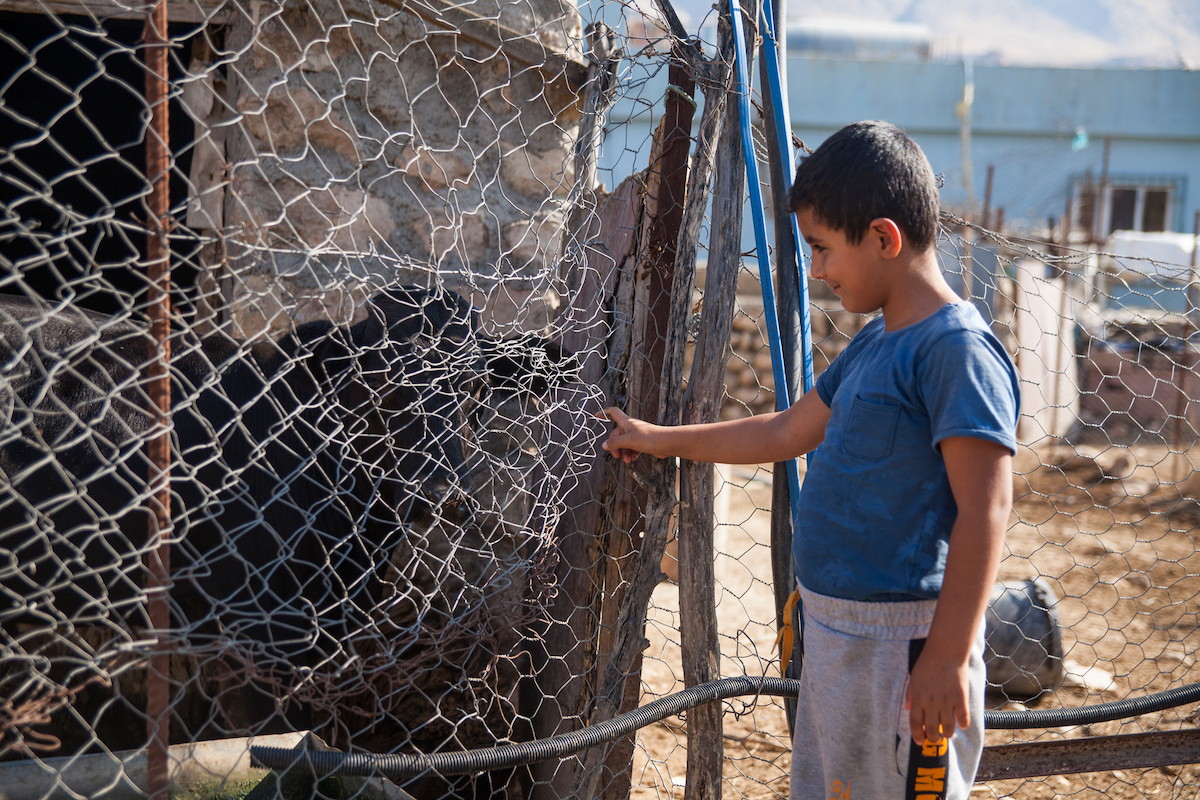
All five of Tapkan's children go to school in Hasankeyf and their studies will be disrupted if they have to move.
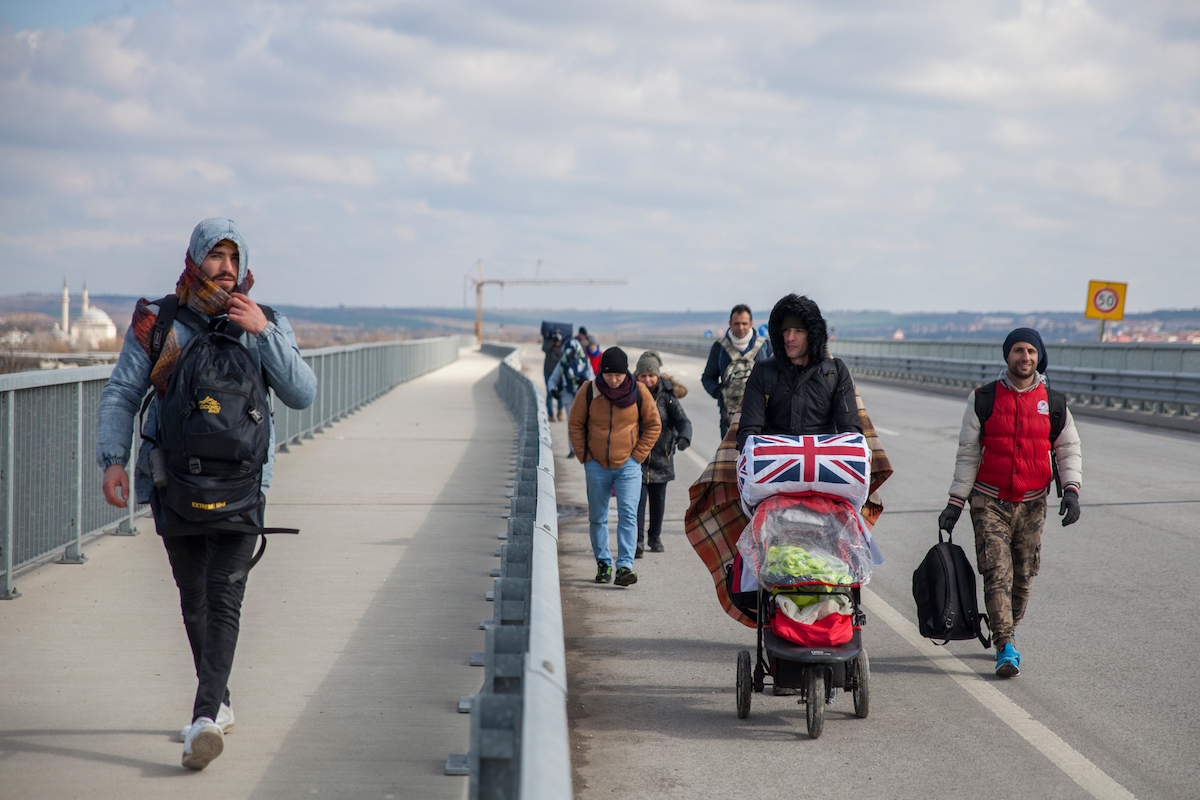
On Feb. 28, the Turkish government announced Ankara would cease controlling its land and sea borders with Europe and open the passage for migrants wishing to cross. Thousands of migrants tried their luck and made their way from all over the country to the Pazarkule border crossing. For Middle East Eye.
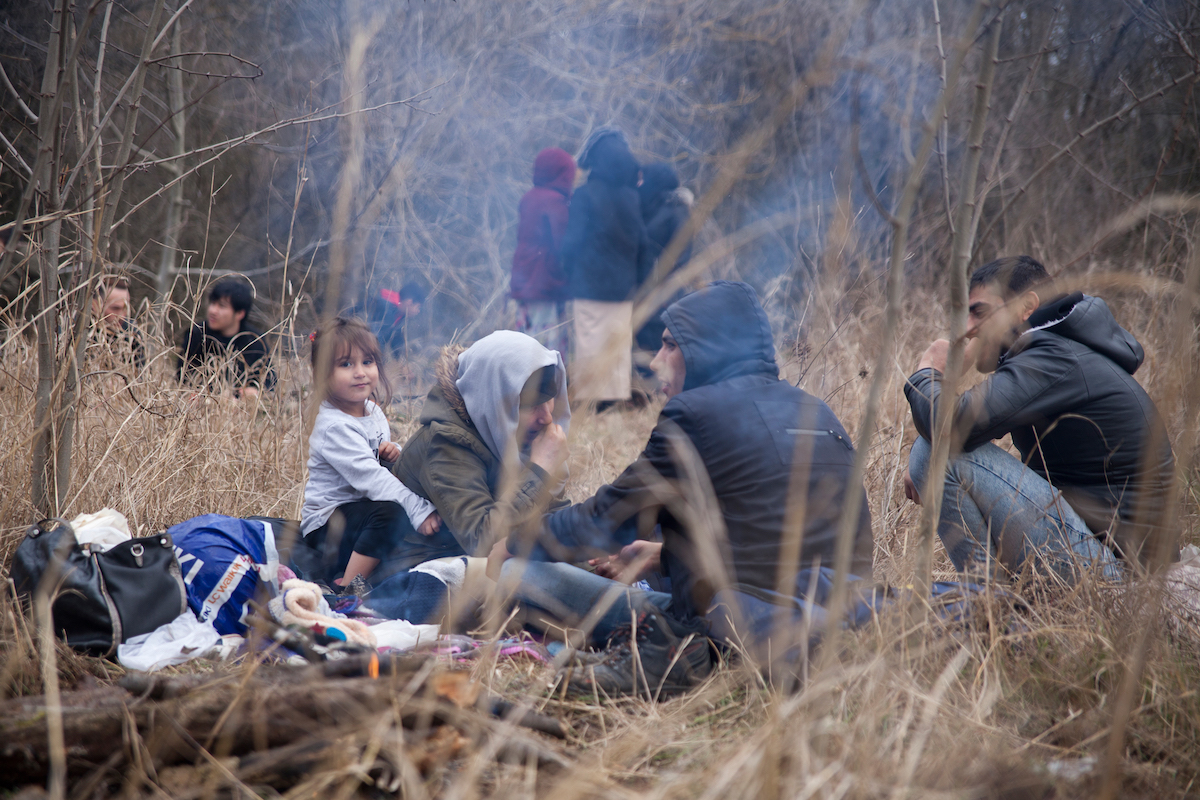
Those who travelled to the border presumed wrongly Greece had also opened its gates. Clinging to hope it would open, migrants including children faced winter temperatures in the open. For Middle East Eye.
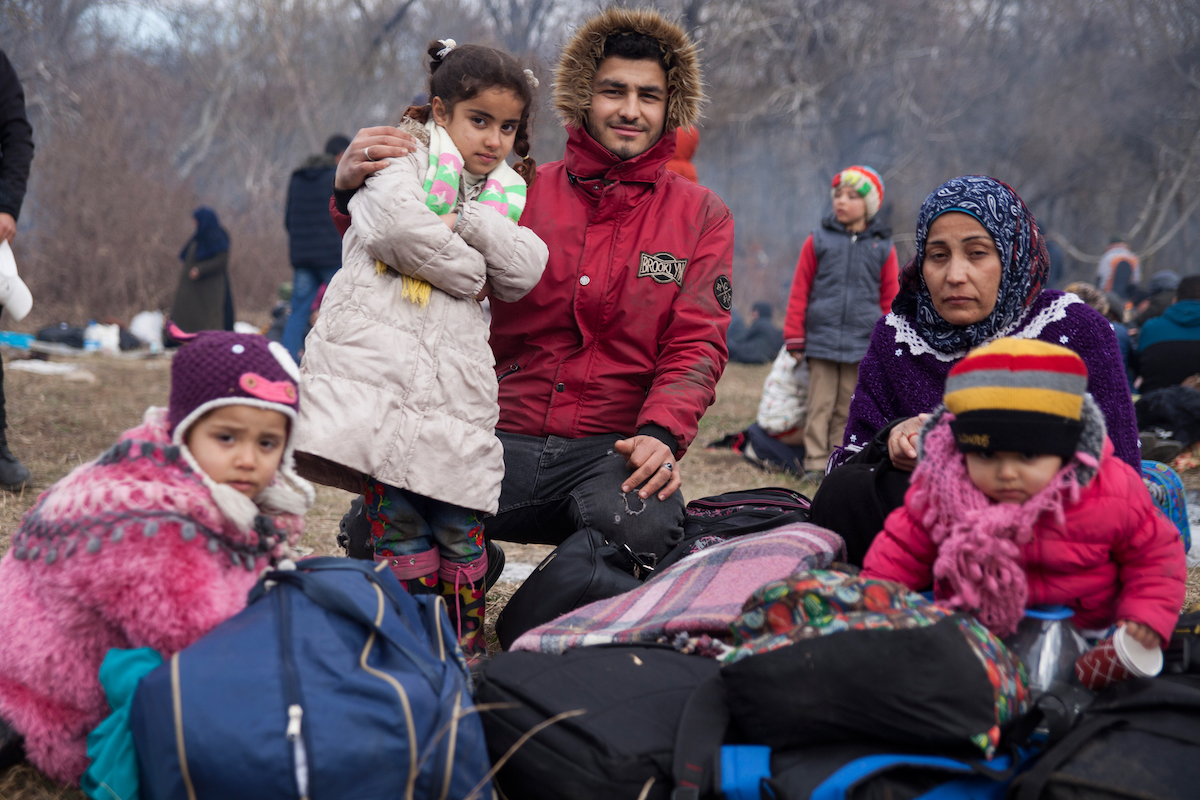
Mohammed along with his sister-in-law and children from Aleppo prayed to God that Greece will open its border for them so they can earn money to survive and visit doctors. For Middle East Eye.
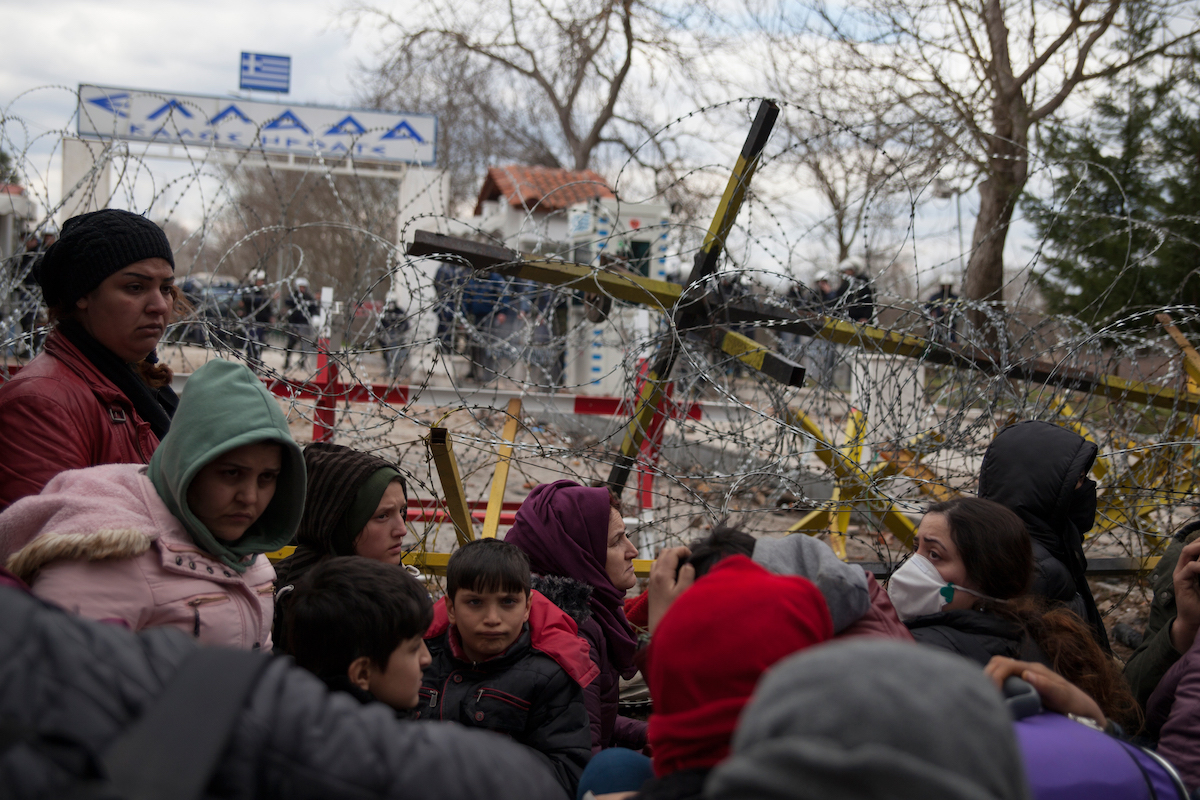
Greek guards at the Pazarkule border crossing have blocked access to the country for even visitors by erecting barbed wire. For Foreign Policy.
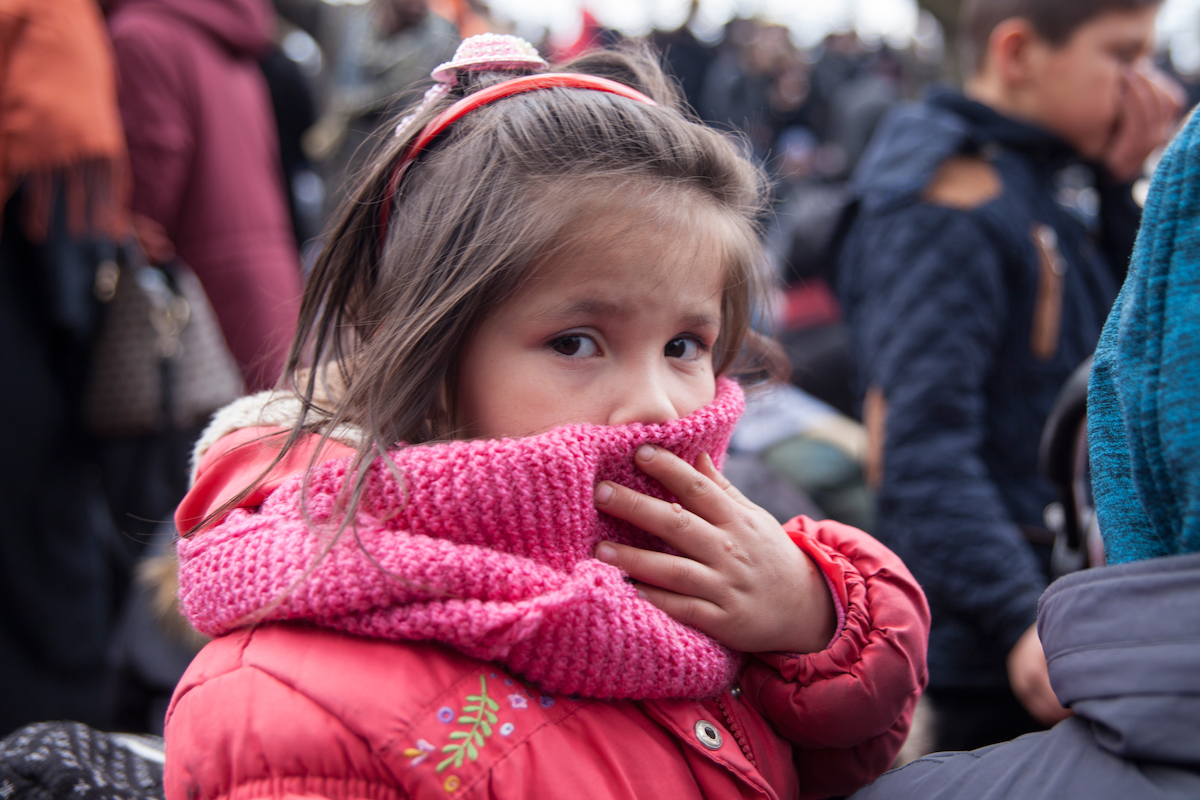
Young children suffer from tear gas inhalation and smoke from fires burning to keep warm at the Greek-Turkish border crossing. For Middle East Eye.
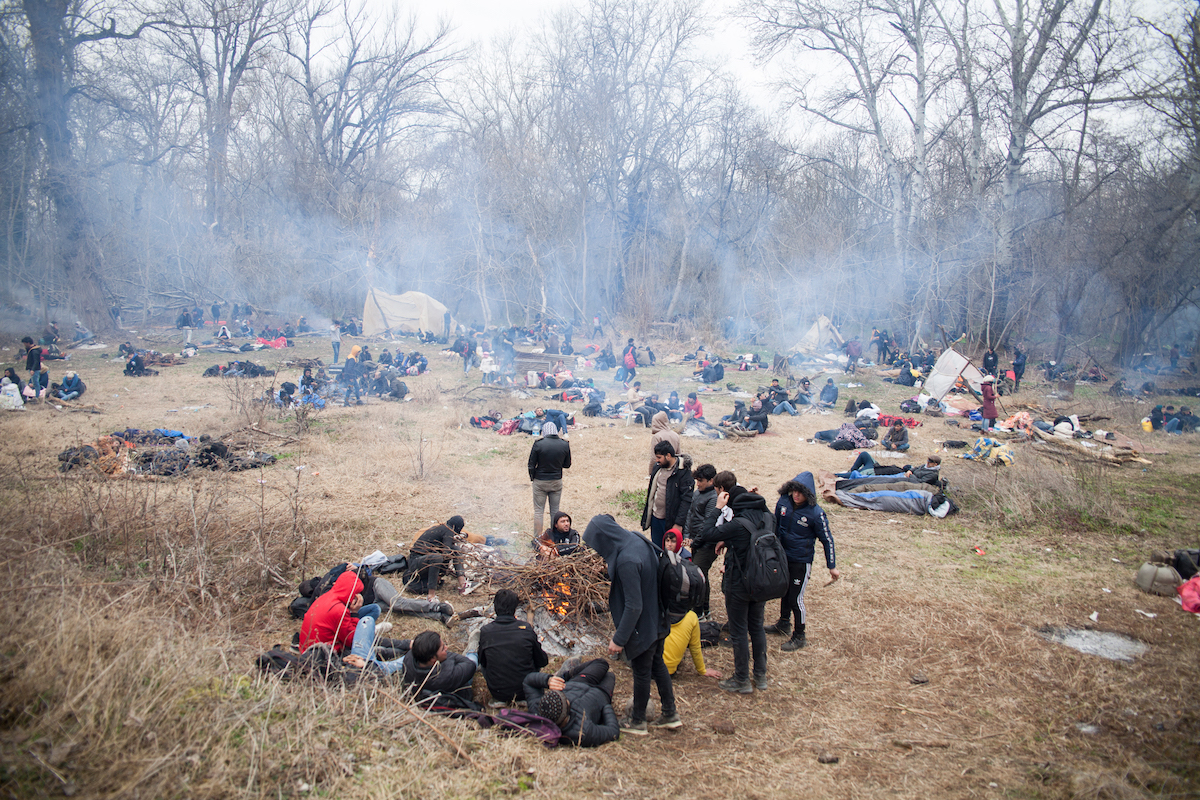
Nearly 4,000 refugees from countries such as Afghanistan, Iran, Syria, Palestine, Bangladesh and Morocco span out into the Turkish military zone near the border with Greece, collecting firewood from the forest to keep warm overnight. For Foreign Policy.
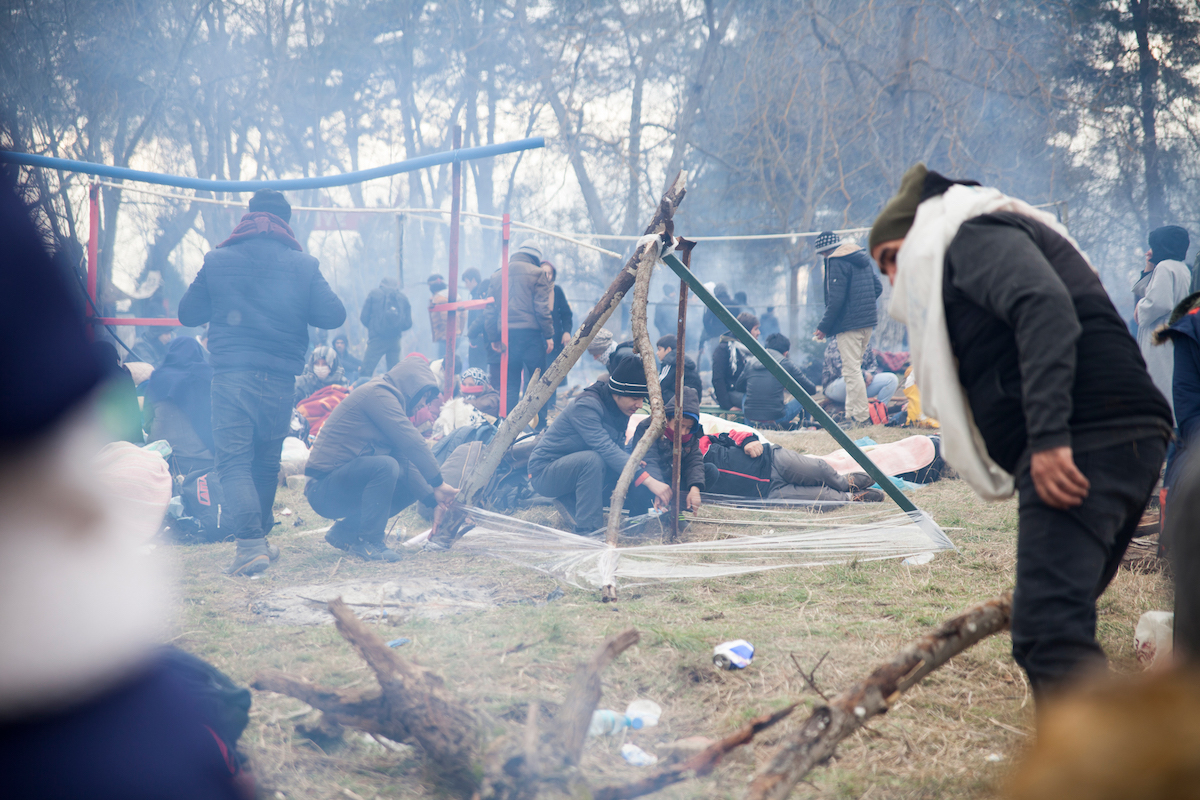
Those refugees with money left over after buying bus tickets to the border with Greece use plastic food wrap to erect a tent to protect them from rain. For Middle East Eye.
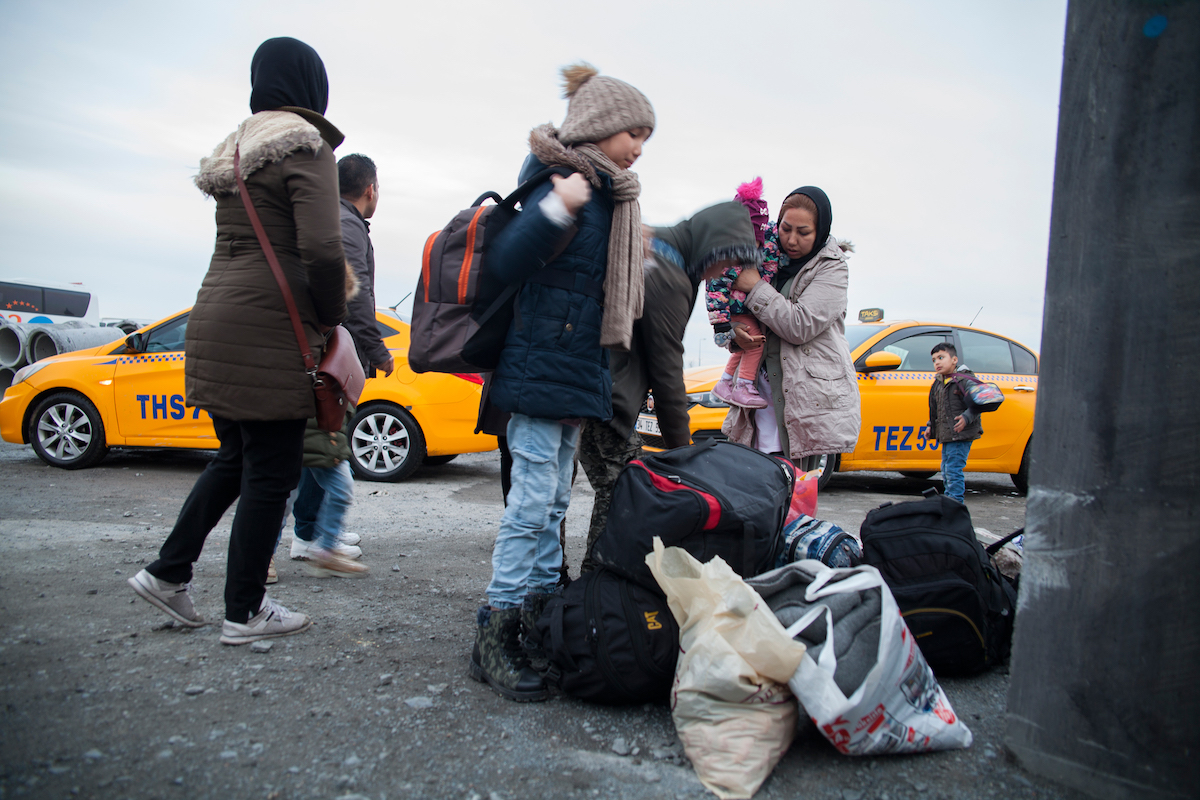
Turkey's borders had been closed to Europe since a deal was signed with the EU in 2016 to restrict irregular migrant flow. The majority of refugees trying to enter Greece are from Afghanistan, like this family pictured travelling from Istanbul. Though many nationalities are represented including refugees from Iran, Syria, Palestine, Bangladesh and Morocco. For Middle East Eye.
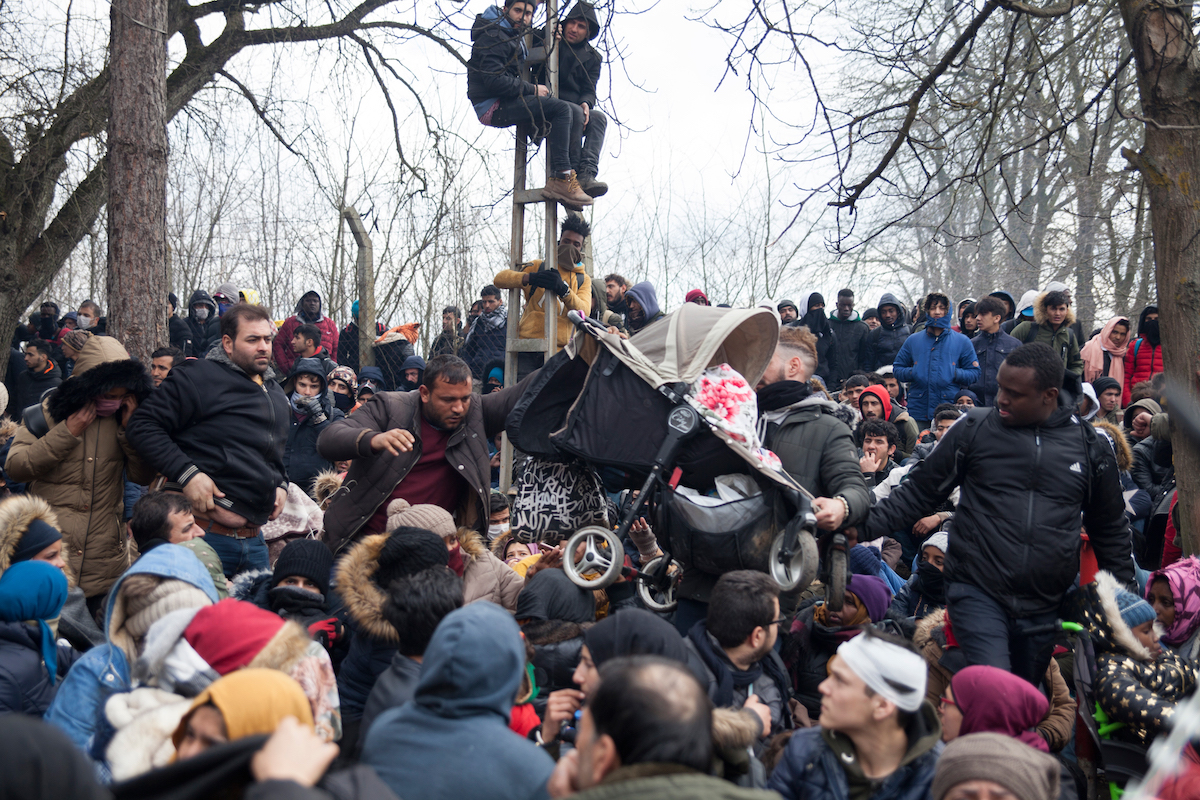
Refugees sit at the Greek border fence, as someone calls for women, children and babies to move to the front in order to convince the guards to open the gate. Kasim, a Bangladeshi refugee, said the situation at the border was particularly hard for women, babies and old people. “There's children here as young as one, how are these people a problem for Greece?,” Kasim asked. For Middle East Eye.
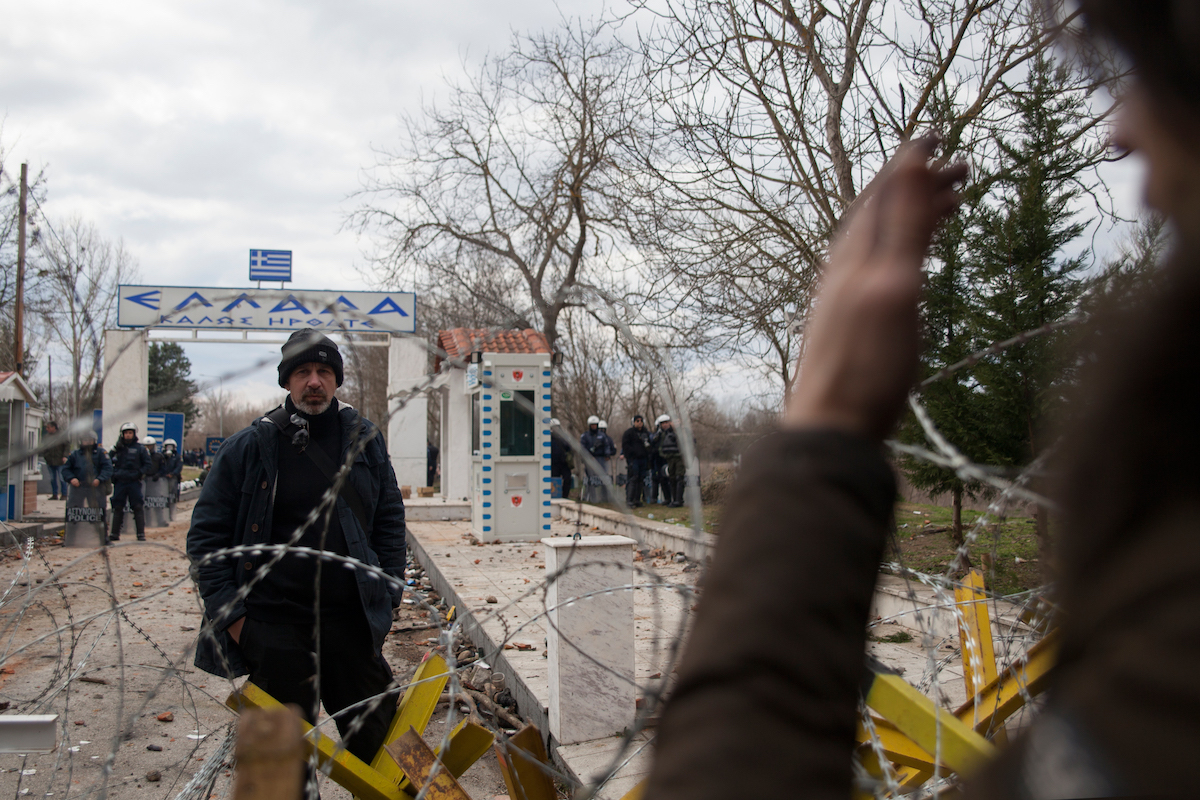
A refugee attempts to reason with a plain clothed guard on the Greek side of the border with Turkey. The refugee took on a diplomatic role among the crowd as he spoke English, asking for bottles of water and attention to their needs. As a result of the new crisis at its borders, Greece has announced it will not be accepting any new asylum applications for one month. For Middle East Eye.
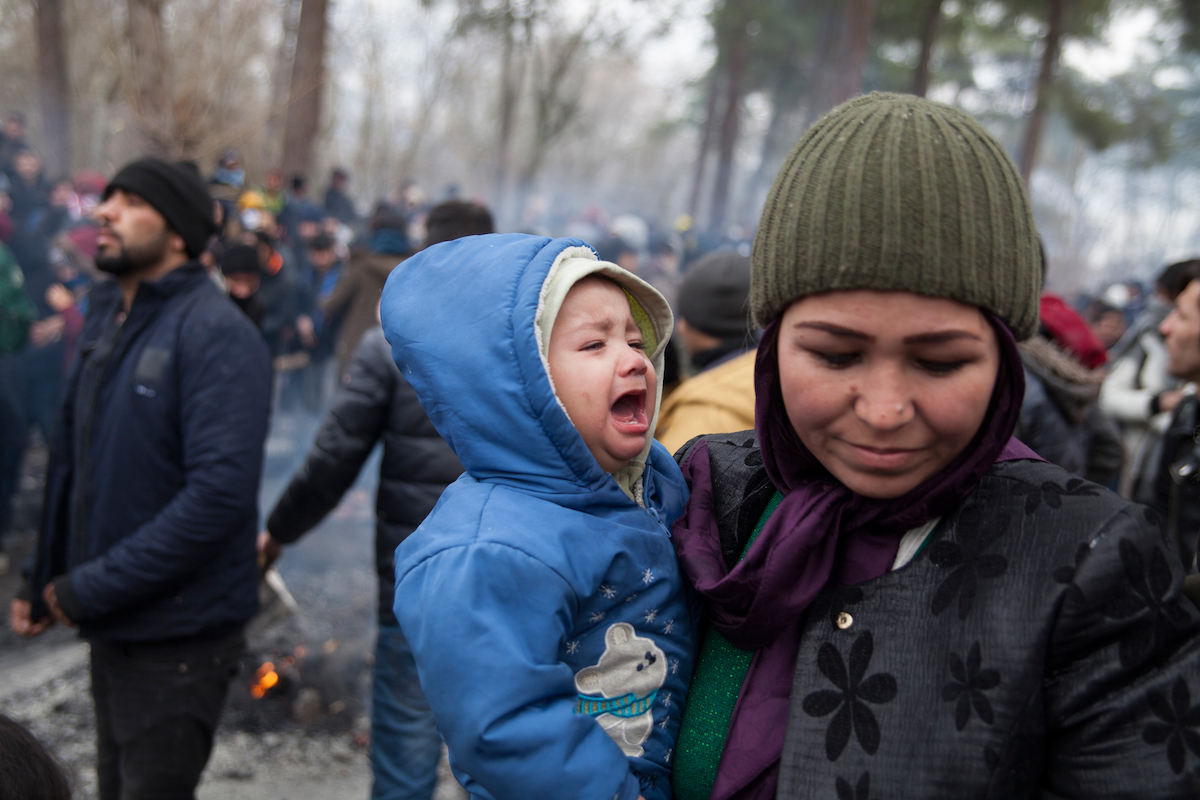
Young children suffer from tear gas inhalation, fired by Greek border patrol, at the Greek-Turkish border crossing. Following the mass flow of migrants to their borders, the Greek government announced it would begin using live fire to control its land and sea borders. Turkish Interior Minister Süleyman Soylu told the Greek authorities in the same day to show ‘humanity.' For Middle East Eye.
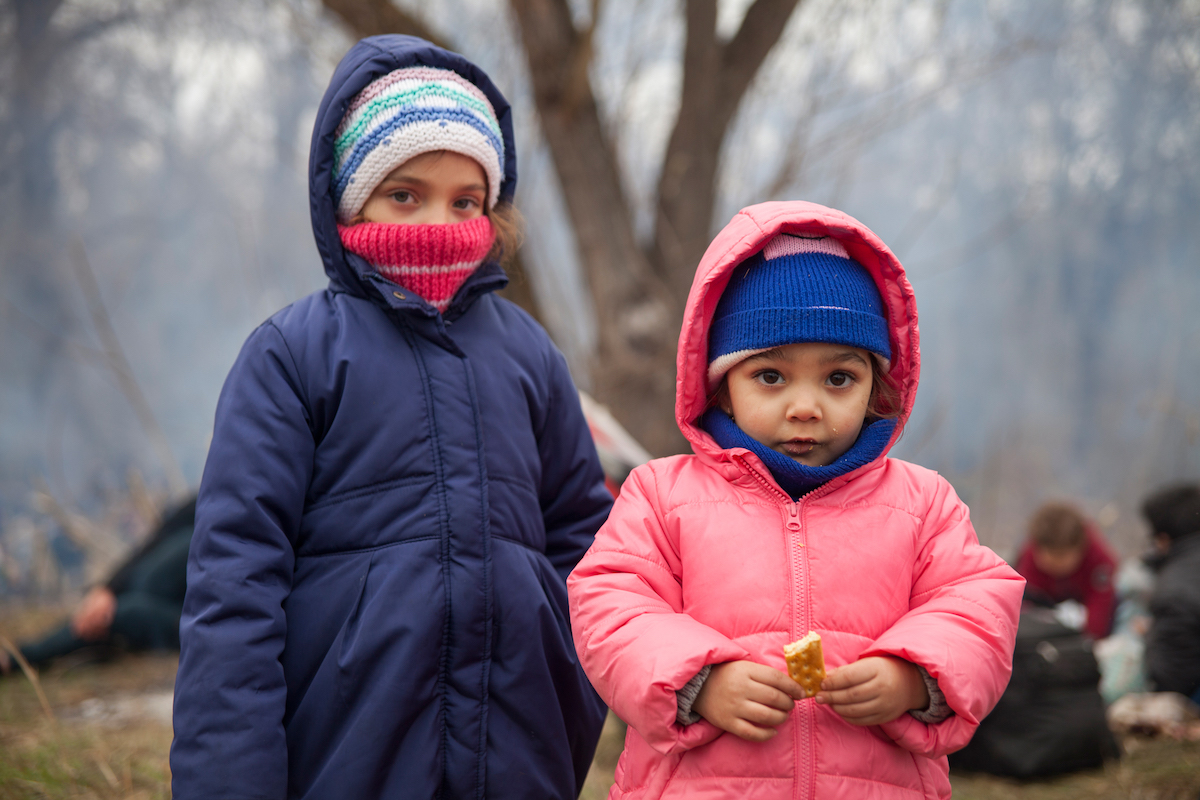
As parents used most, if not all, of their money to travel to the border, food becomes scarce as they stay camped out in the open for multiple nights. Turkish aid organisations provide supplies of biscuits and sandwiches.
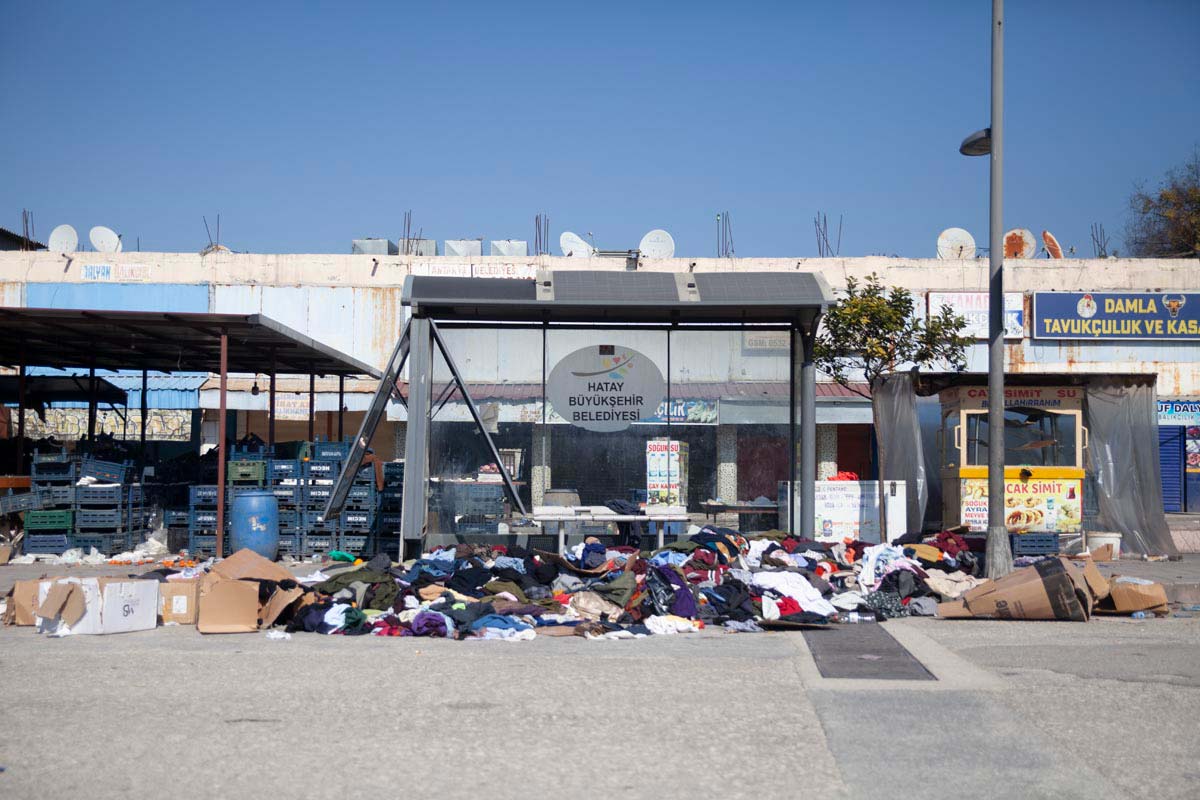
The following are photos taken following the 7.8 magnitude earthquake which hit Turkey and north Syria in February 2023. Here, in Hatay, the district facing the most destruction and loss of life, clothes from NGO and volunteer collectives are dumped on the roads for survivors to take what they need.
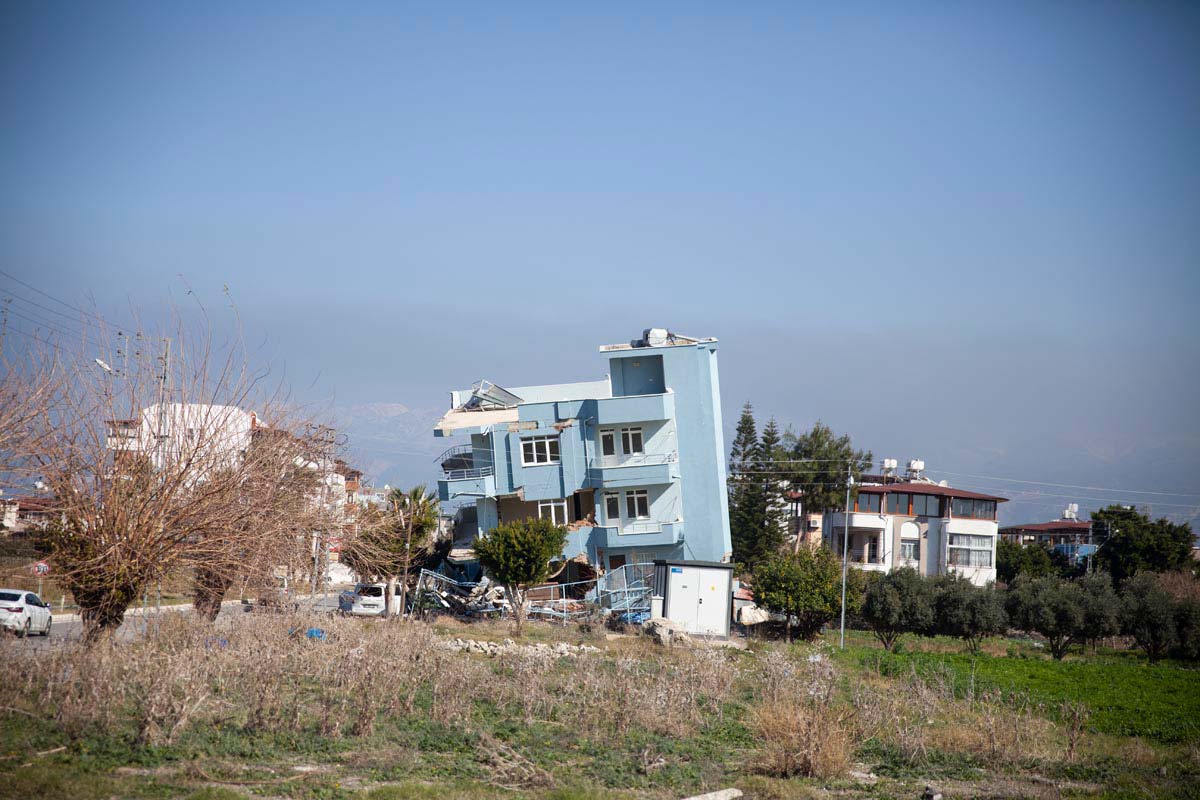
An apartment building hangs on its last legs in Iskenderun following a 7.8 magnitude earthquake which hit Turkey and Syria.
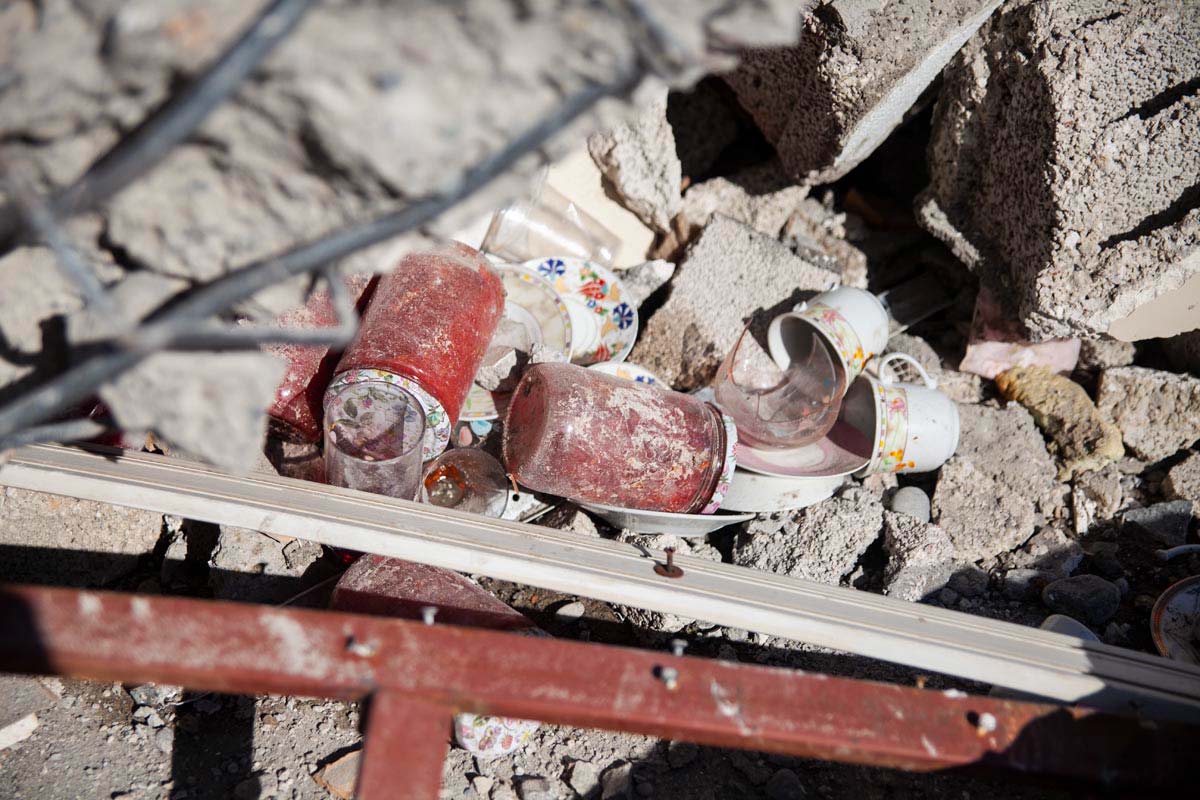
Kitchen neccessities, tomato and capsicum paste, are crushed in the rubble of apartment building destroyed in the earthquake in Turkey.
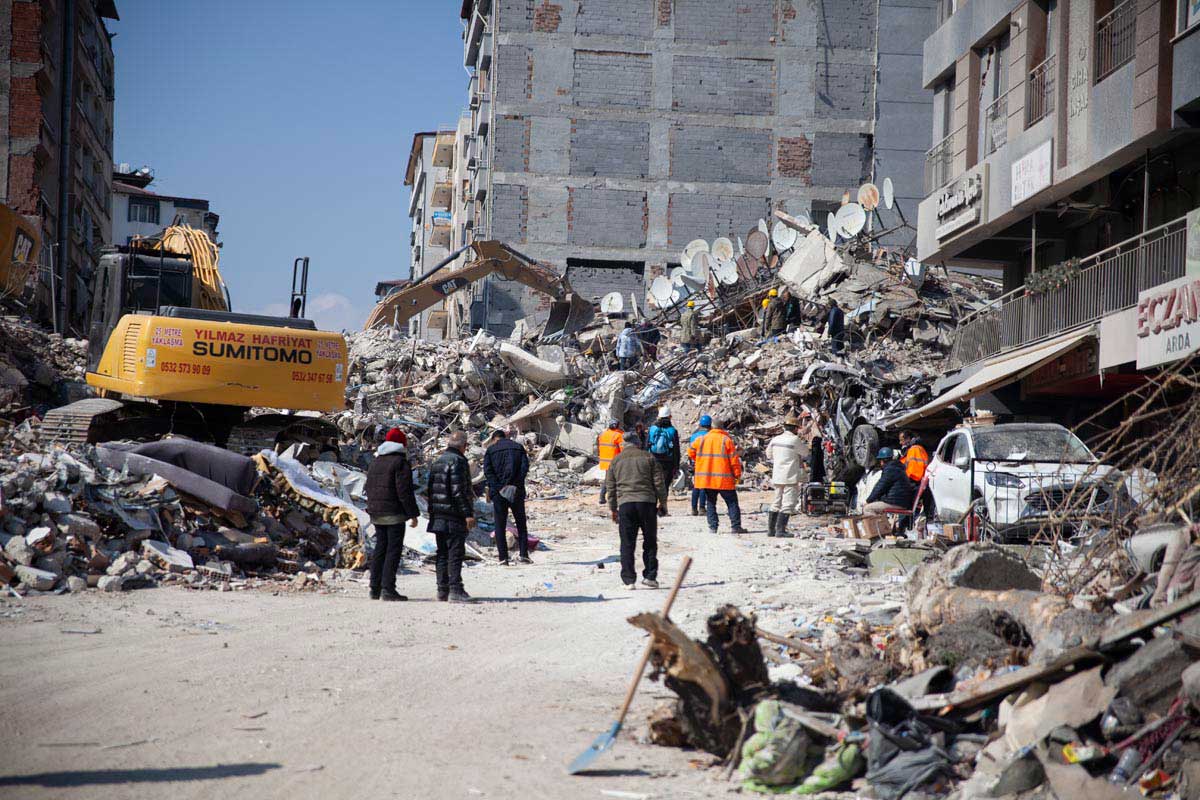
Search and rescue teams wait alongside the constant workings of an excavator, moving rubble in the hope to hear life.
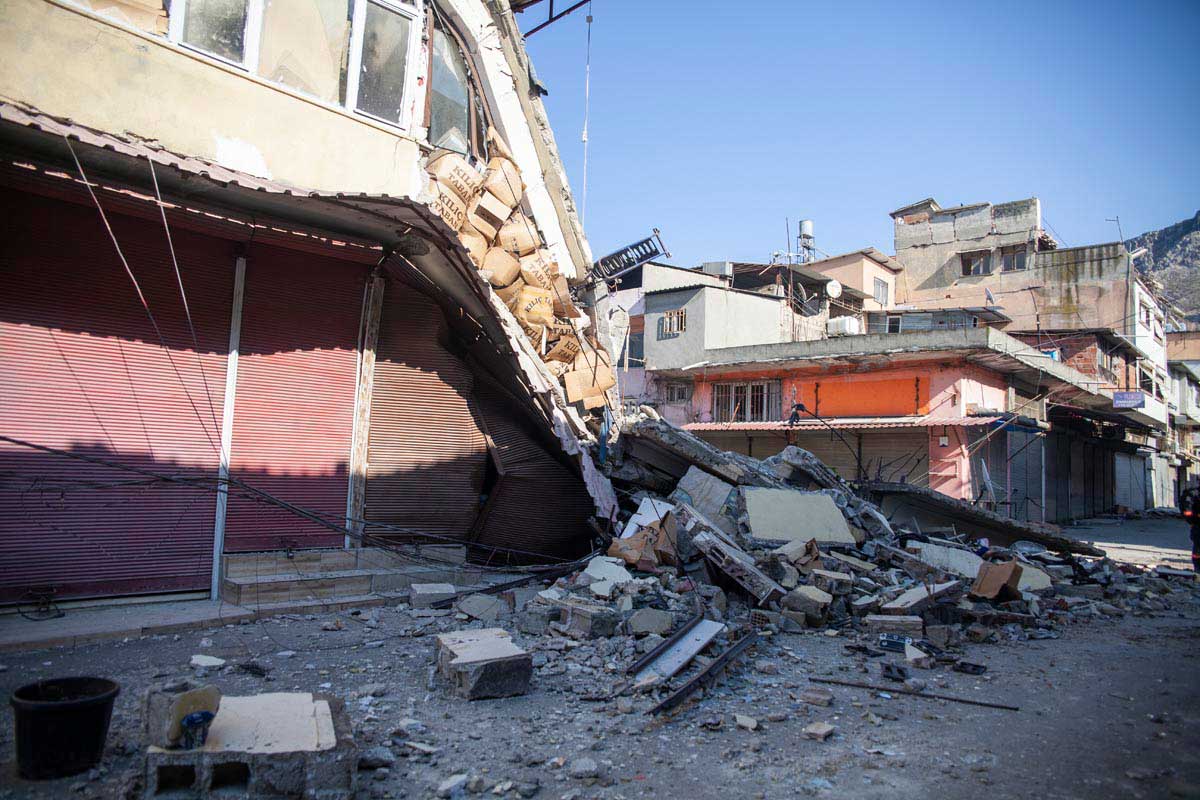
Destruction in the centre of Hatay following a 7.8 magnitude earthquake in February 2023.
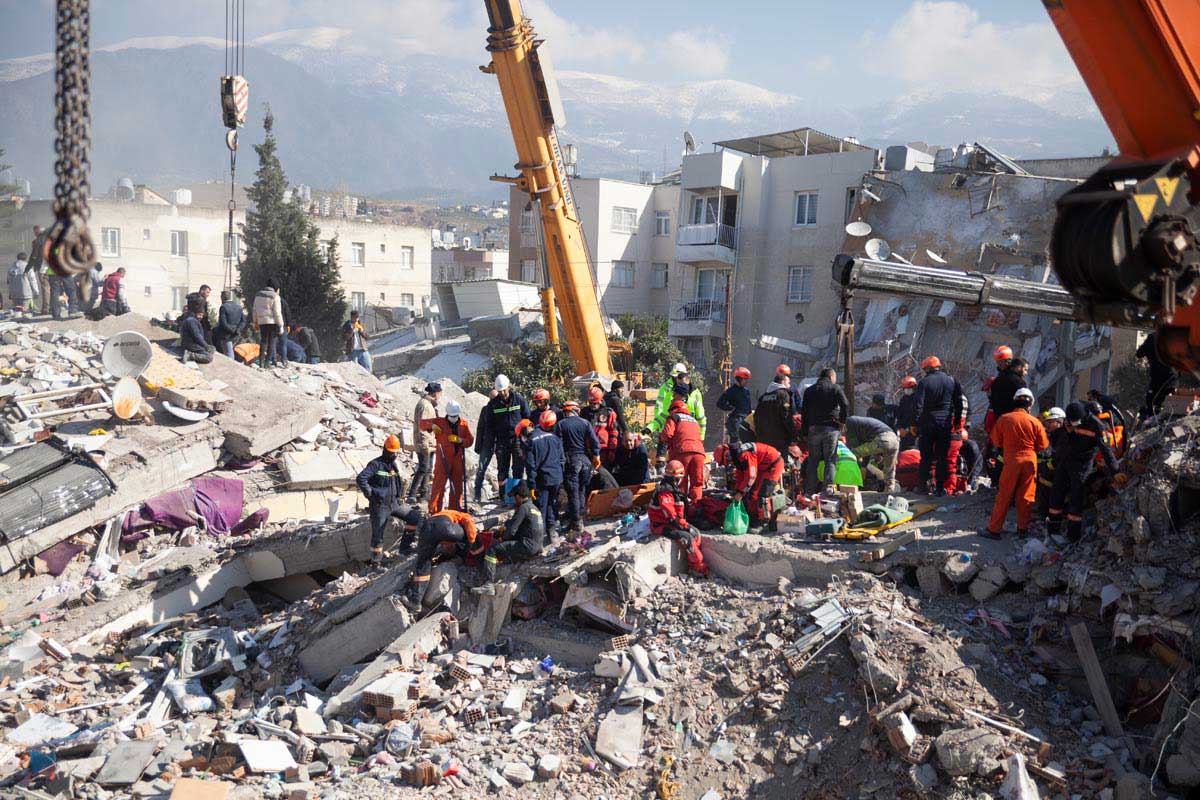
Search and rescue teams work to rescue someone they believe to be alive under the rubble of an apartment block in Iskenderun, Turkey. Using heat sensors they can tell if there are survivors.
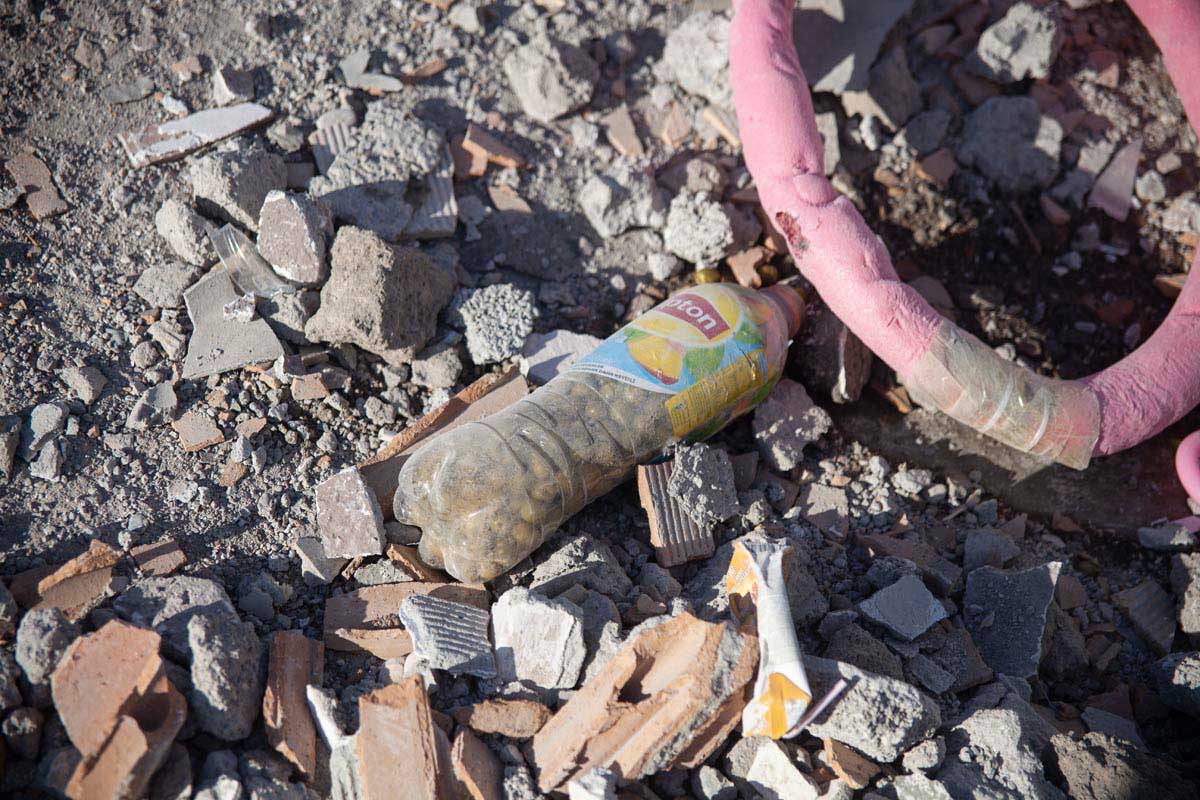
Olives preserved from the village, spralled in the destruction of the earthquake in Turkey.
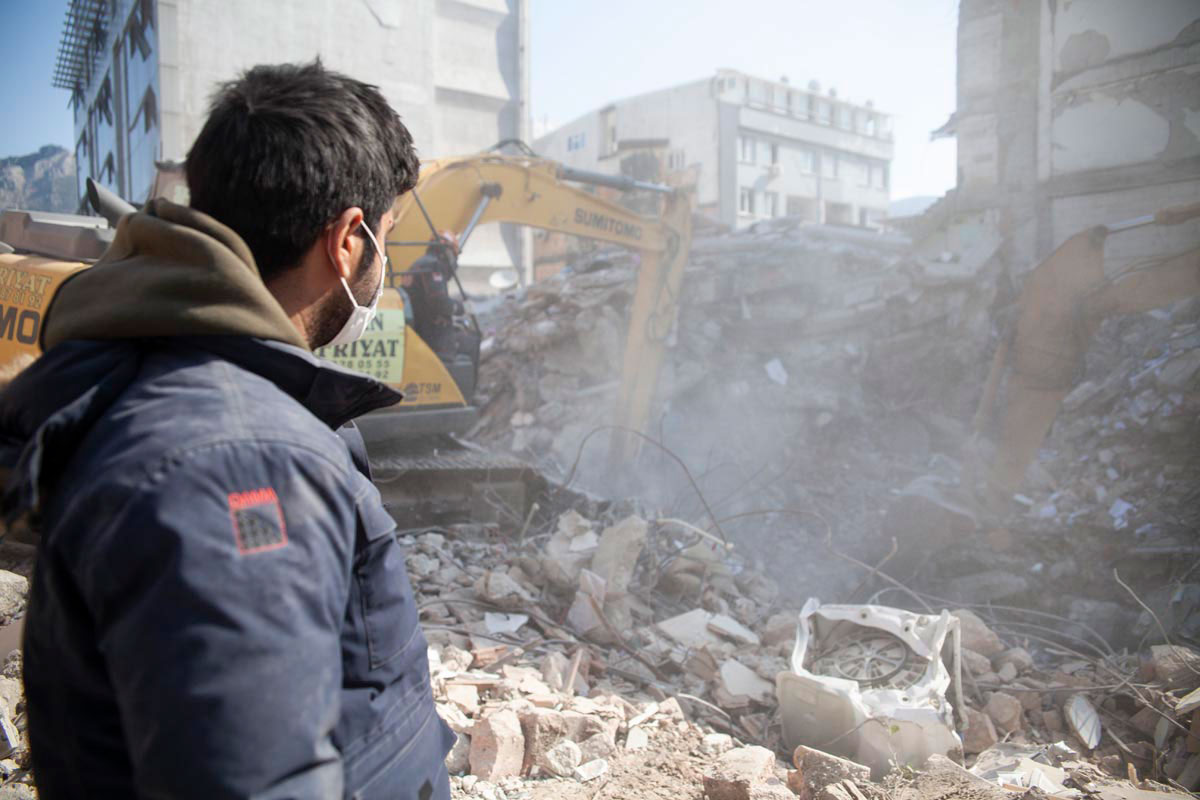
A young man from Hatay waits in hope that his aunt will be pulled out of the rubble alive. "We thought maybe she had run to the stairs to escape the building, but we didn't find her in that section of the house, so now we're searching the bedroom."
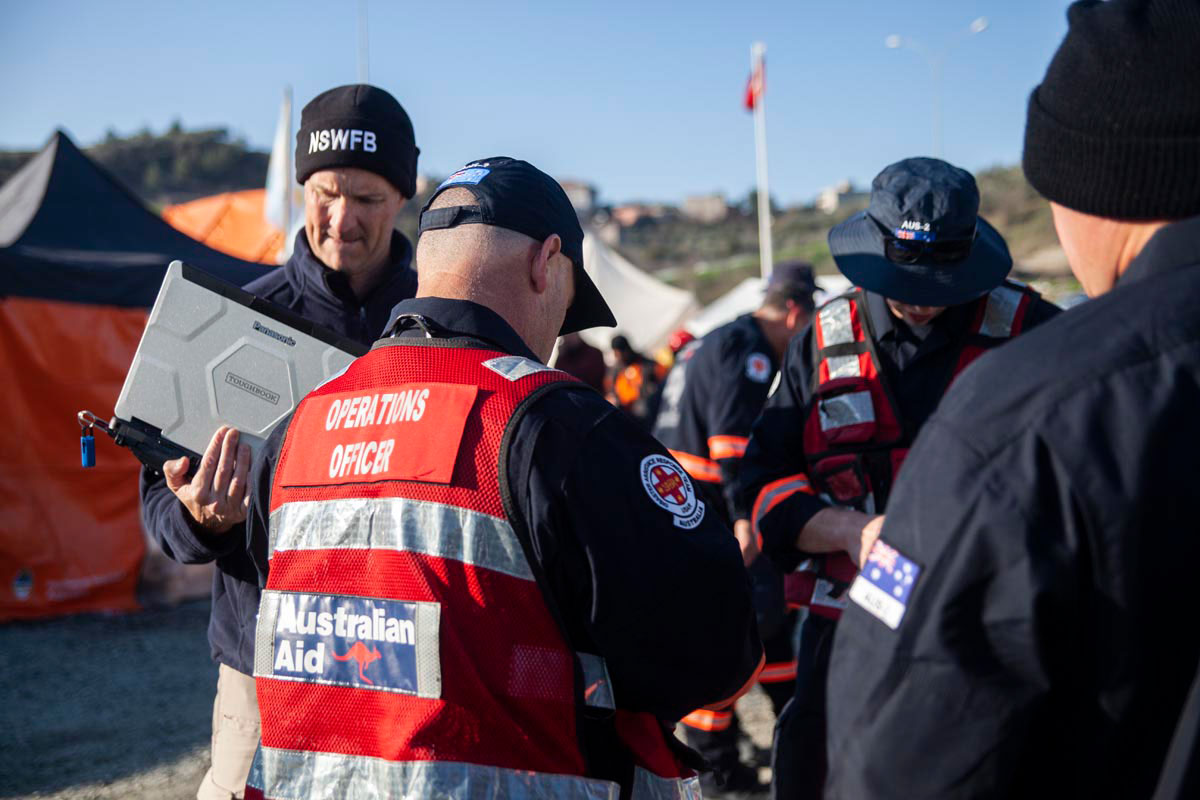
Australia, like many countries, sent over a team to Turkey to help with search and rescue in the aftermath of the earthquake.
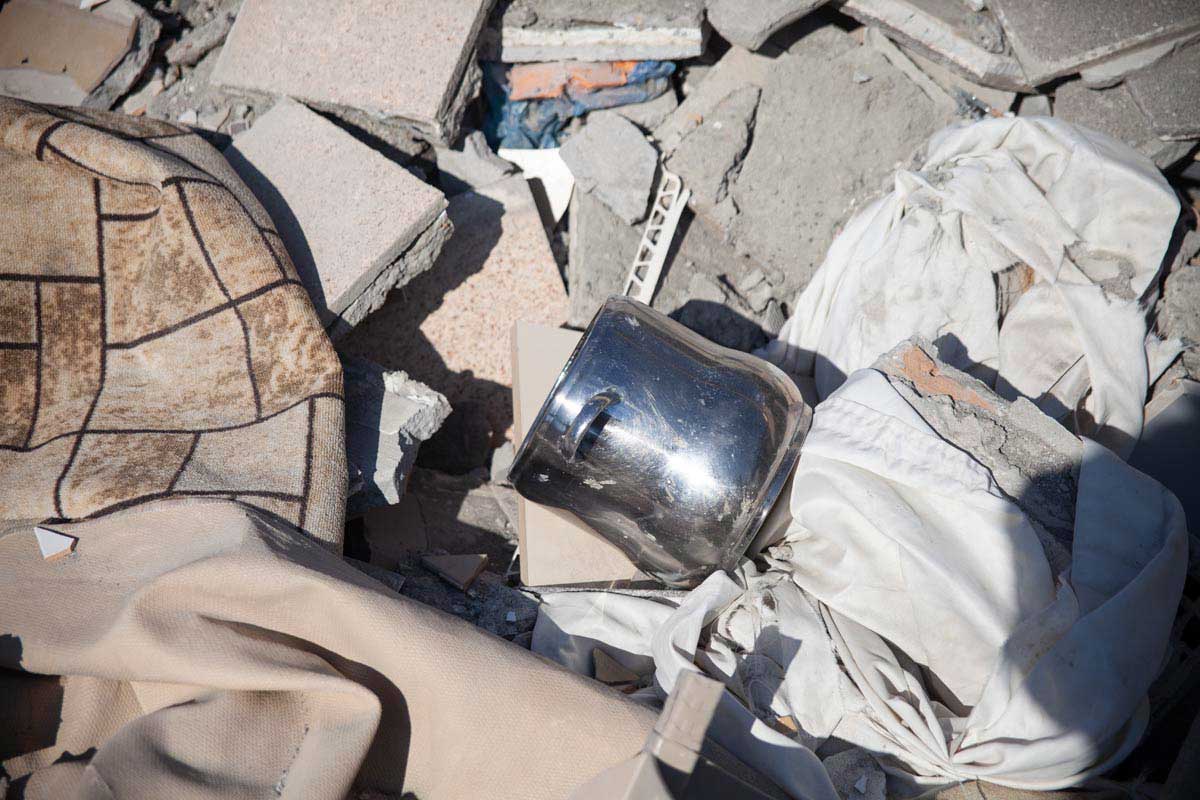
Pots from a destroyed kitchen give signs of final moments of life.
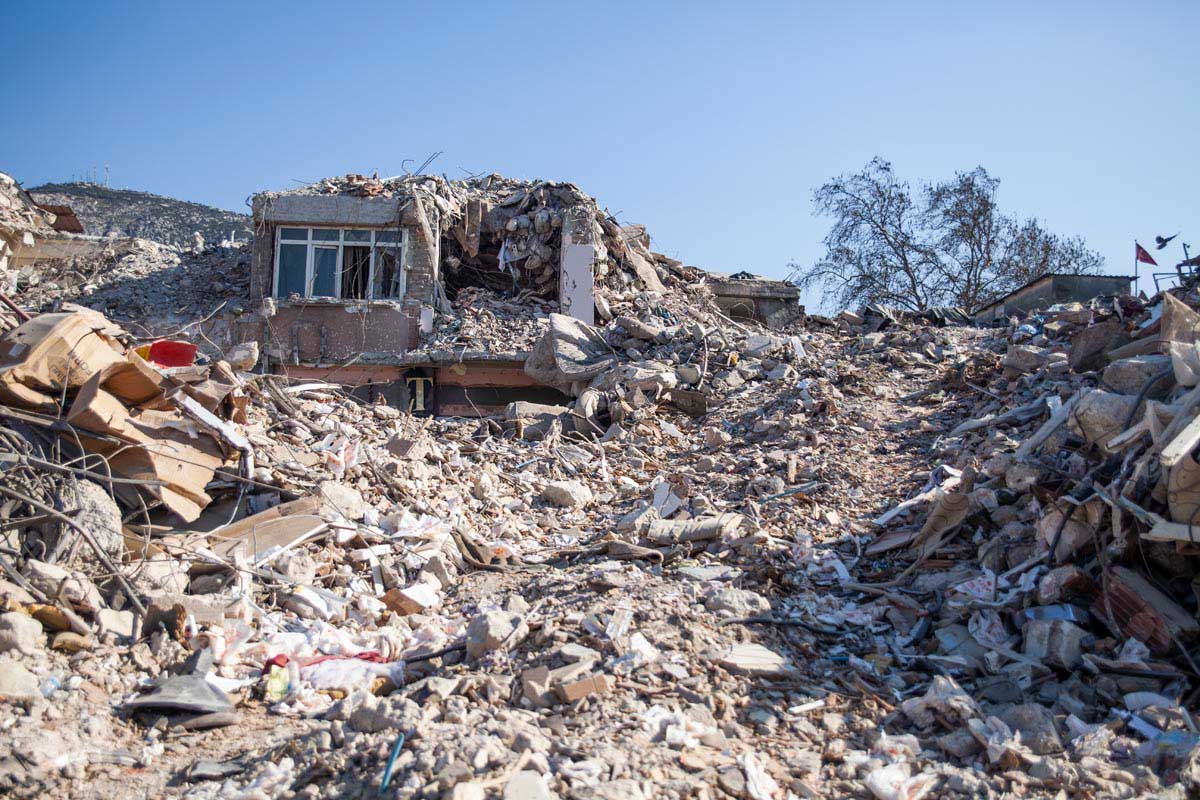
Whole streets of houses are wiped out in Hatay, Turkey after the 7.8 magnitude earthquake.
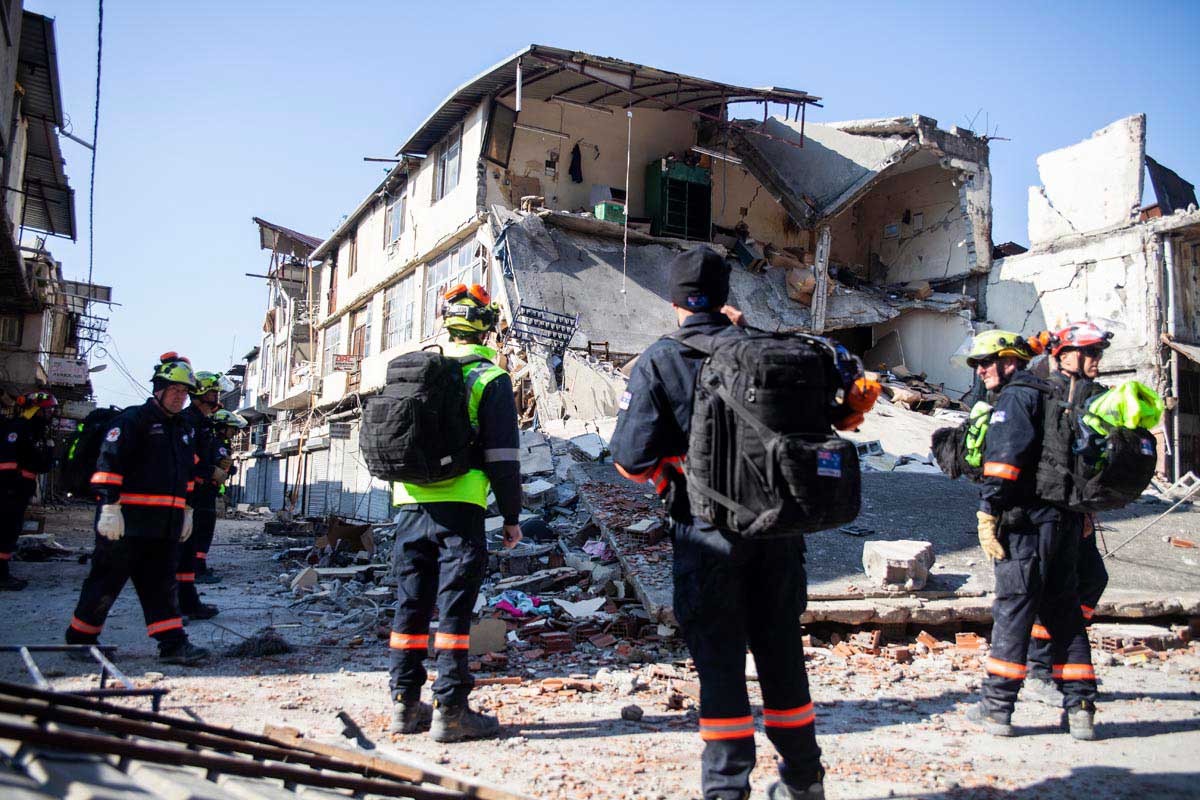
The Australian search and rescue team walks through Hatay to determine what buildings still need search teams or heavy machinery.

At the Bab al Hawa border crossing from Turkey to Syria, trucks carrying deceased Syrians are brought by the Hatay municipality, to be transferred and delivered across the other side for burial. Syrians living in Turkey are unable to cross for the funeral so are forced to say their goodbyes at the border.
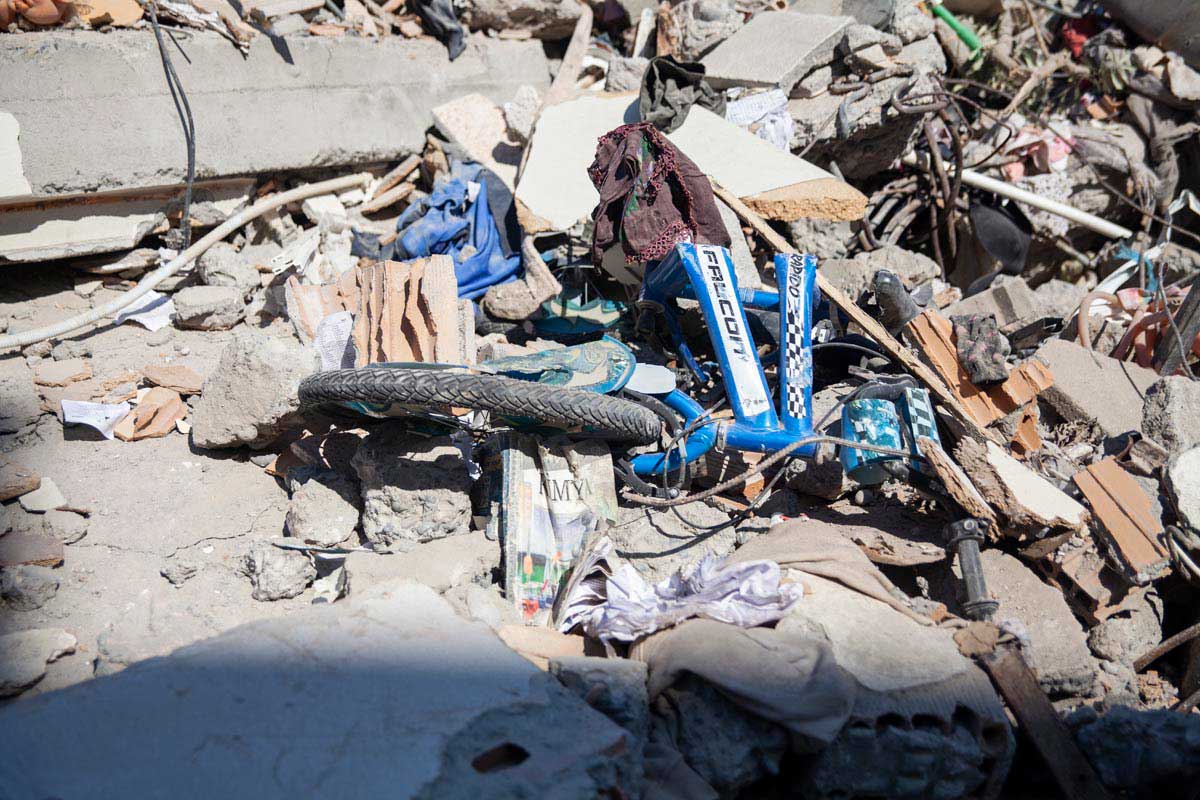
A child's bike destroyed in the rubble of an apartment building in Hatay, Turkey.
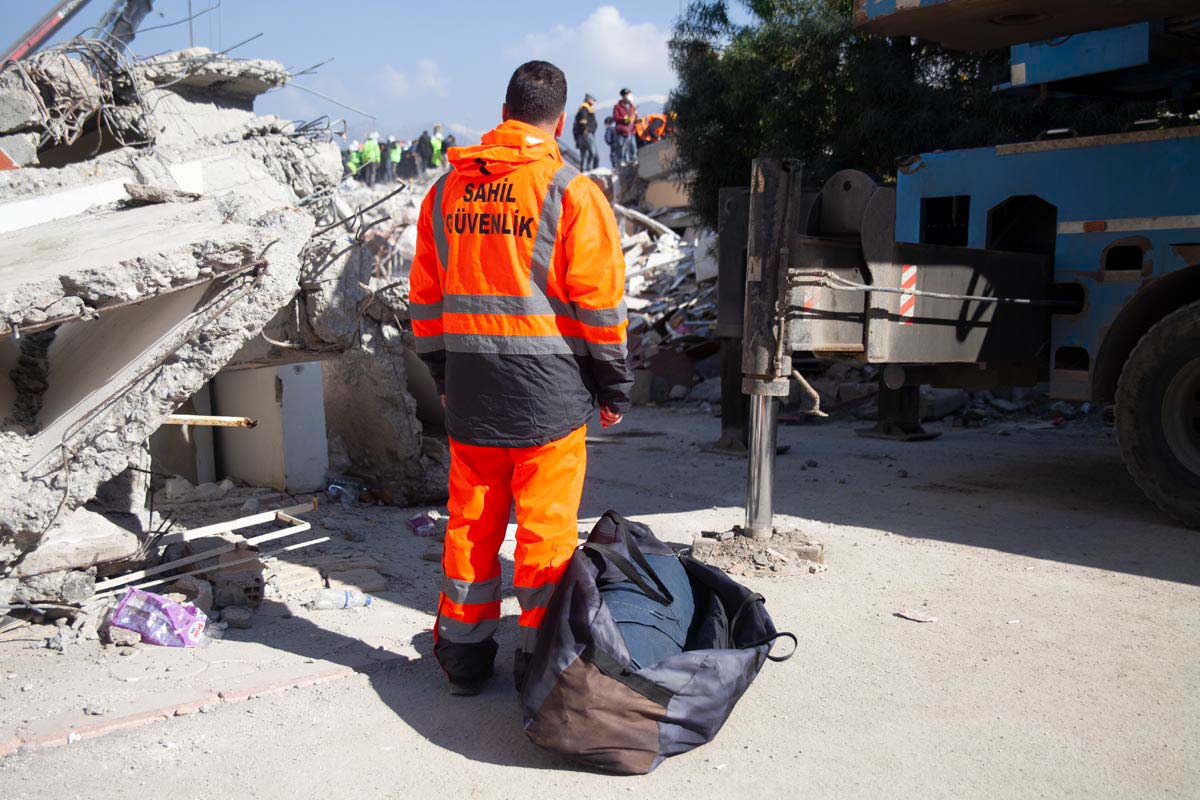
A Turkish volunteer grimly awaits with body bags for the moment another deceased person is retrieved from the rubble of an apartment building in Iskenderun.
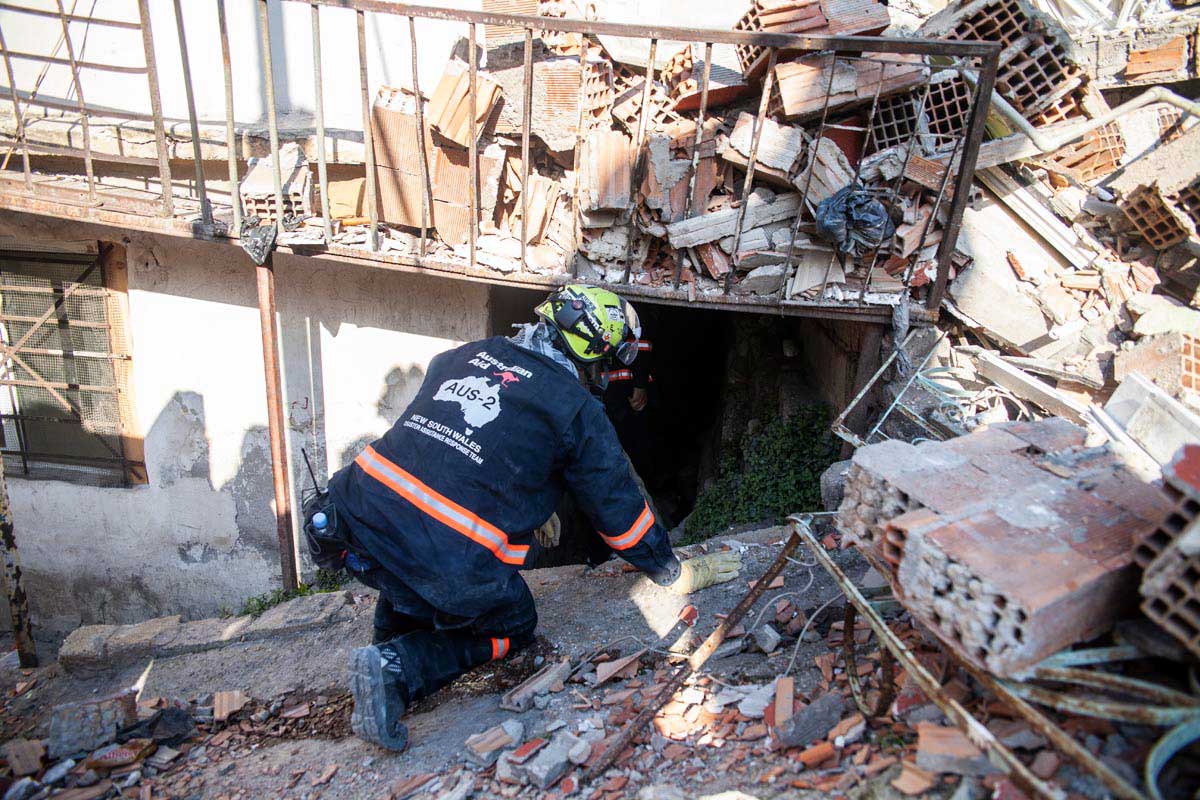
An Australian rescue worker searches a cavity under a collpased house in Hatay, assessing house safe it is to retrieve the body of someone killed in the earthquake.

A child's toy visible in the rubble of a home in Iskenderun, Turkey following the 7.8 magnitude earthquake.

Wood is taken from abandoned and collapsed buildings to fuel fires in the streets at night as people have become homeless, and volunteers delivering aid and helping in search and rescue have nowhere but their cars to sleep.
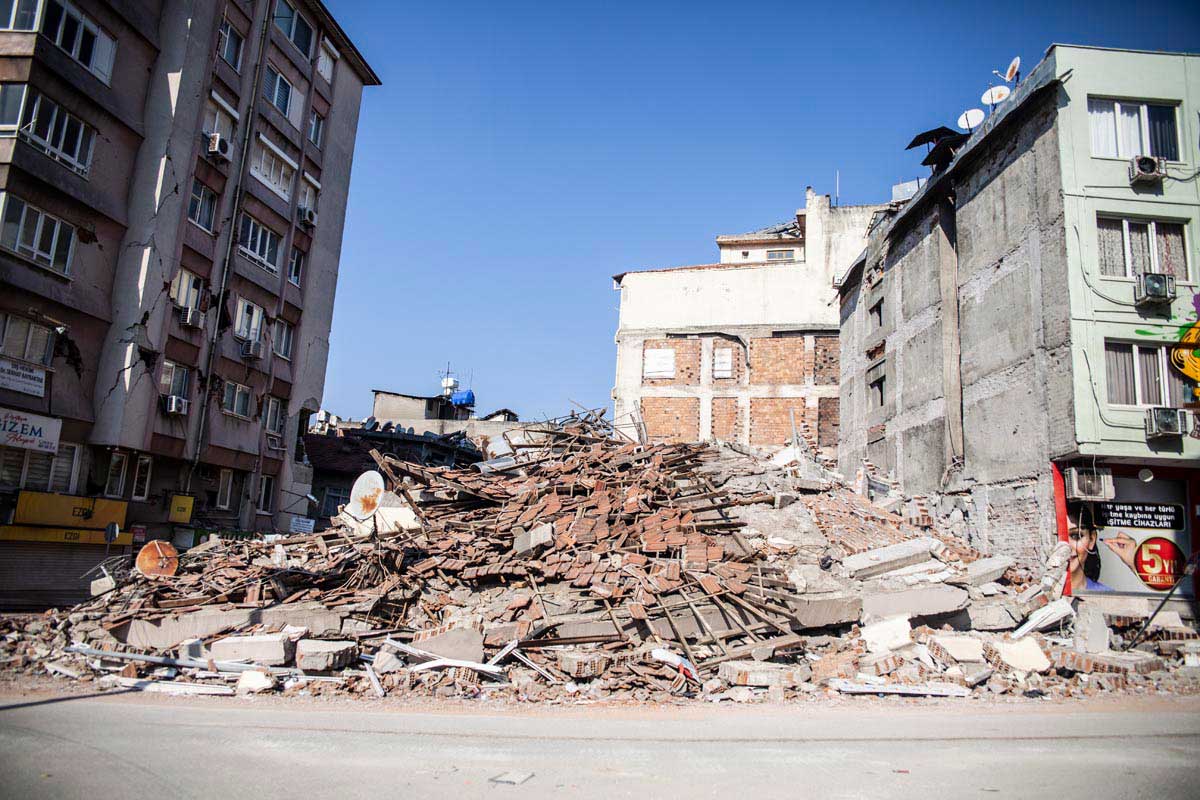
A whole building collapsed in the city of Hatay, Turkey.
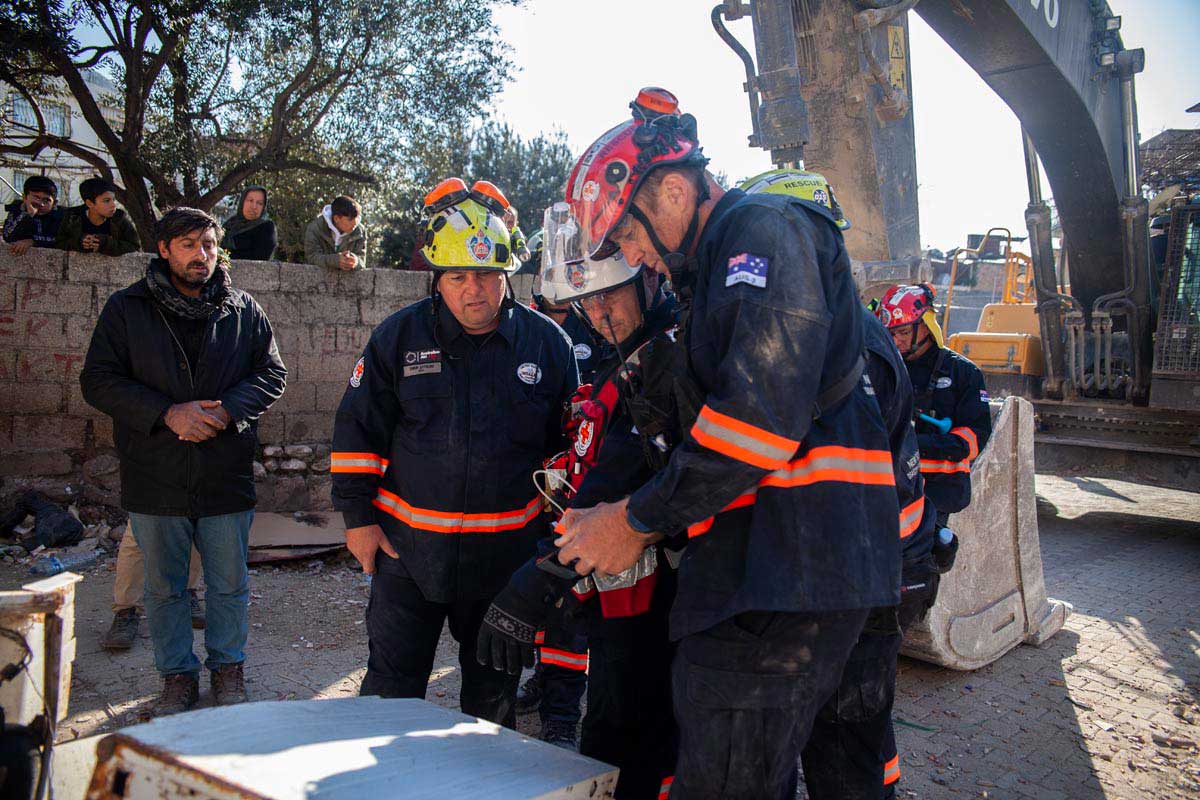
The Australian search and rescue team assess the way in which bodies are trapped in the rubble of a house, to determine a plan as to how to extract them.
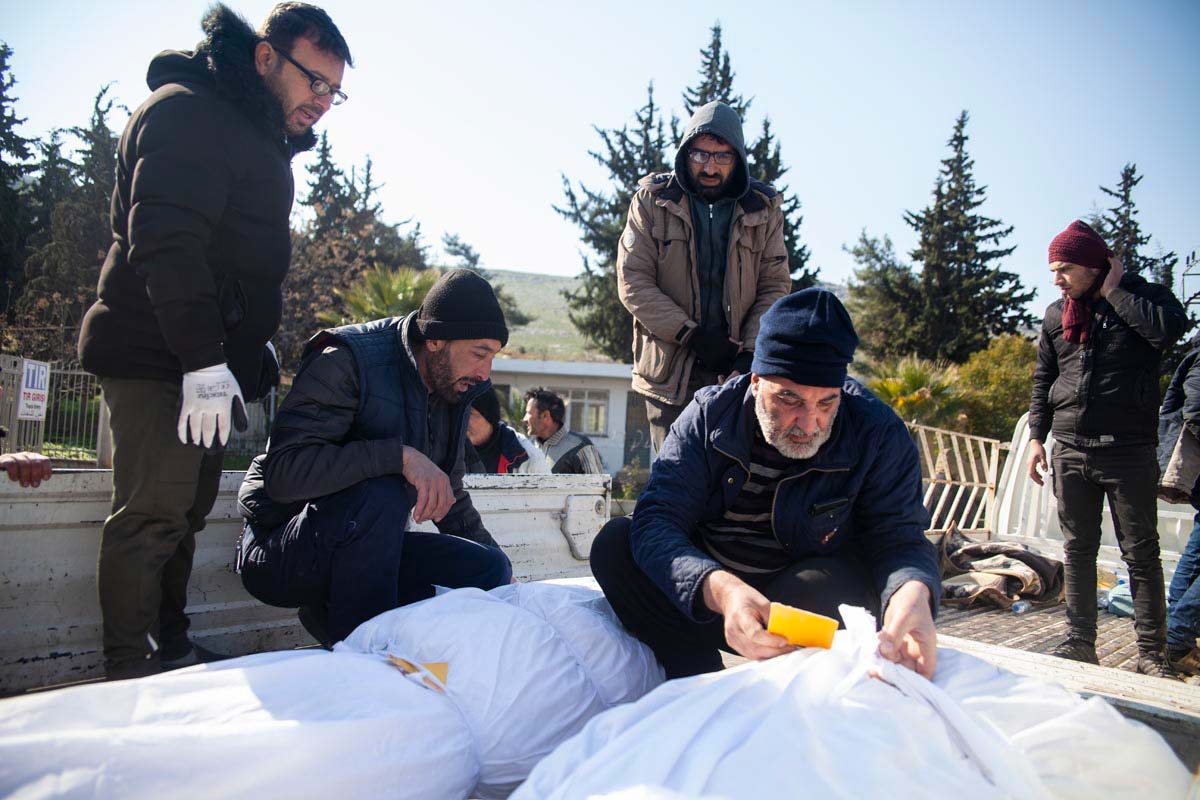
Syrian families check the names of people killed and brought to the Bab al Hawa border crossing, to be buried in Syria.
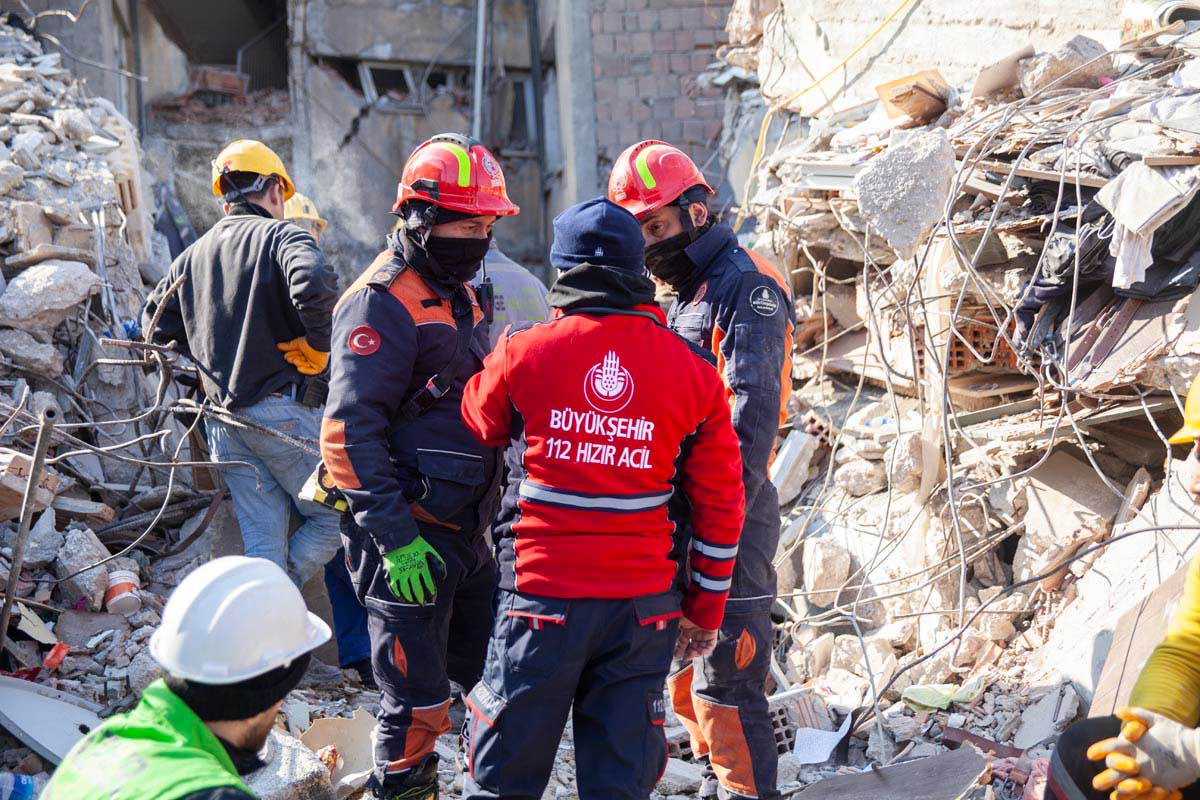
Volunteers from Istanbul discuss the way a young girl, miraculously still alive six days after the earthquake, is trapped in the basement of an apartment building.
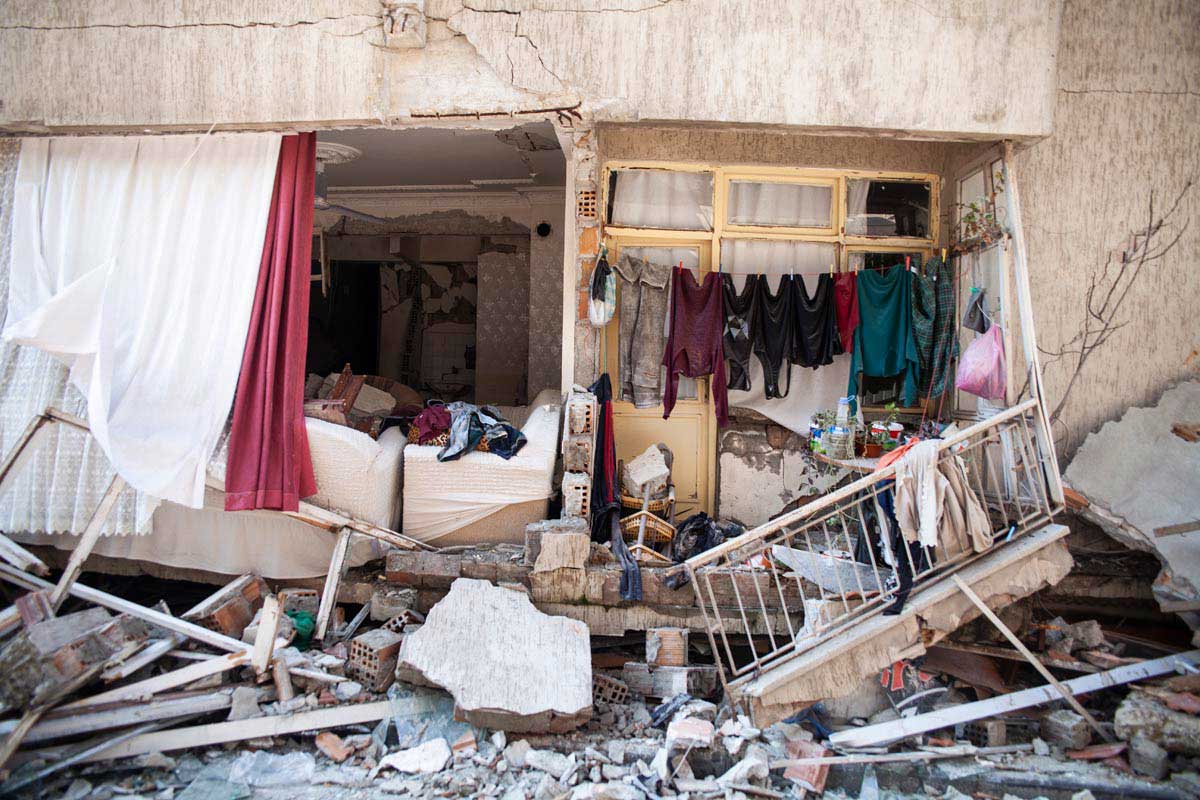
Houses still partially intact in Hatay are abandoned after the 7.8 magnitude earthquake, for fear of them collapsing in one of the thousands of aftershocks.
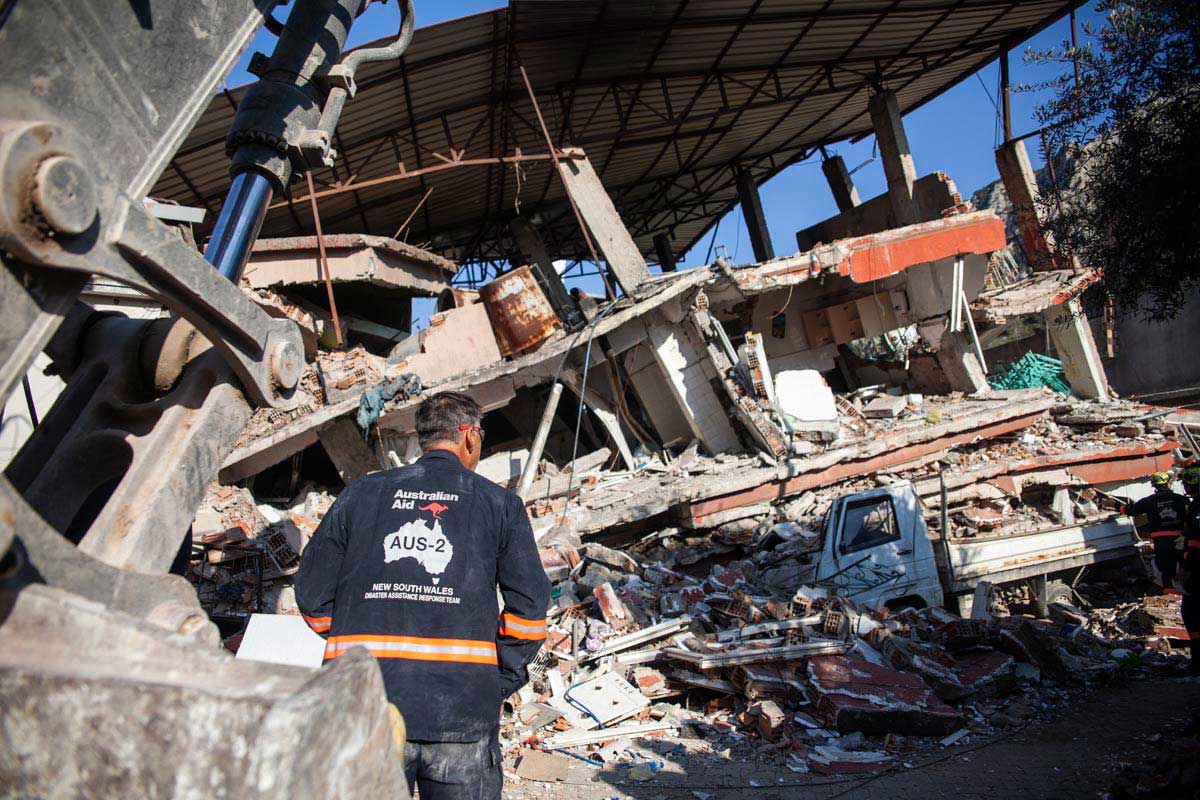
Three floors of this building in Hatay has collapsed on each other, killing whole families, still buried underneath.
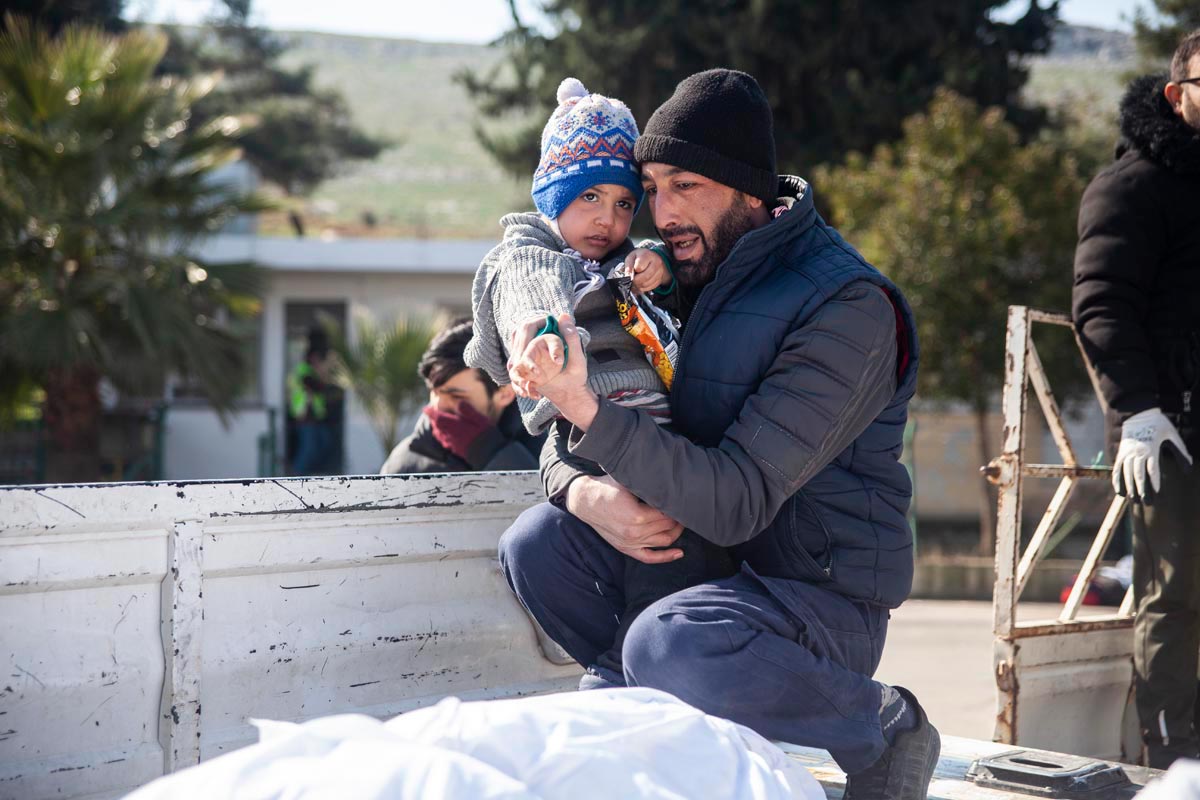
A father encourages his confused child to say goodbye to Mum, before her body is driven into Syria for burial.
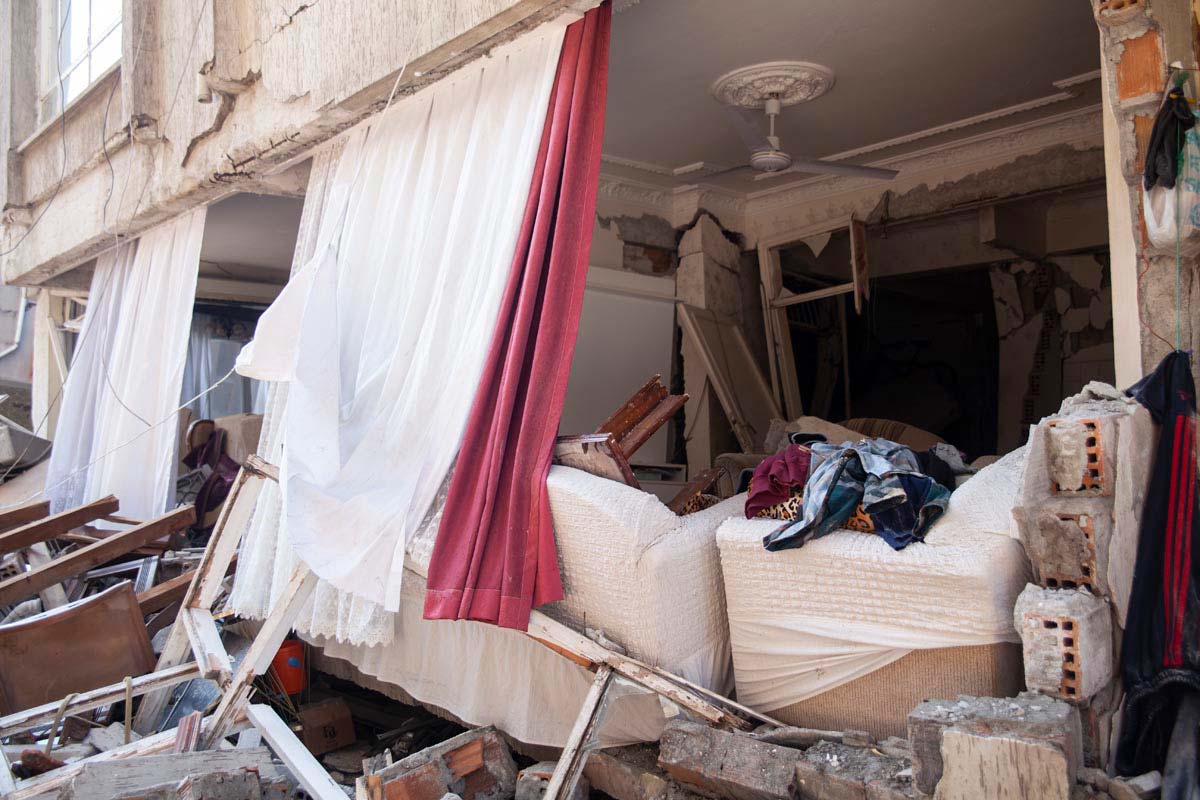
Overnight, 14 million people’s lives were shattered when the largest earthquake in nearly 100 years rocked Turkey.

Australian rescue volunteers check to see if they can install stabilisers under a building in order to retrieve the deceased.
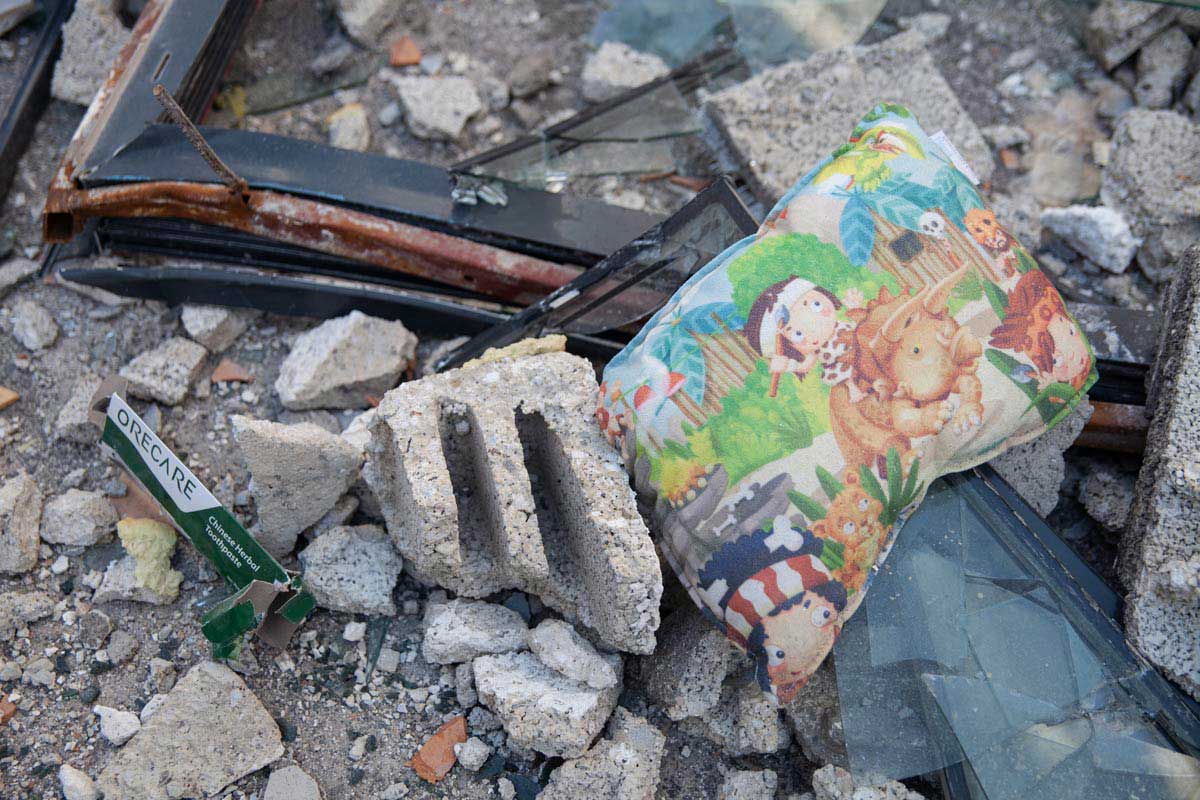
A child’s pillow and a toothpaste packet strewn in the street, thrown from a building in Iskenderun, Turkey.
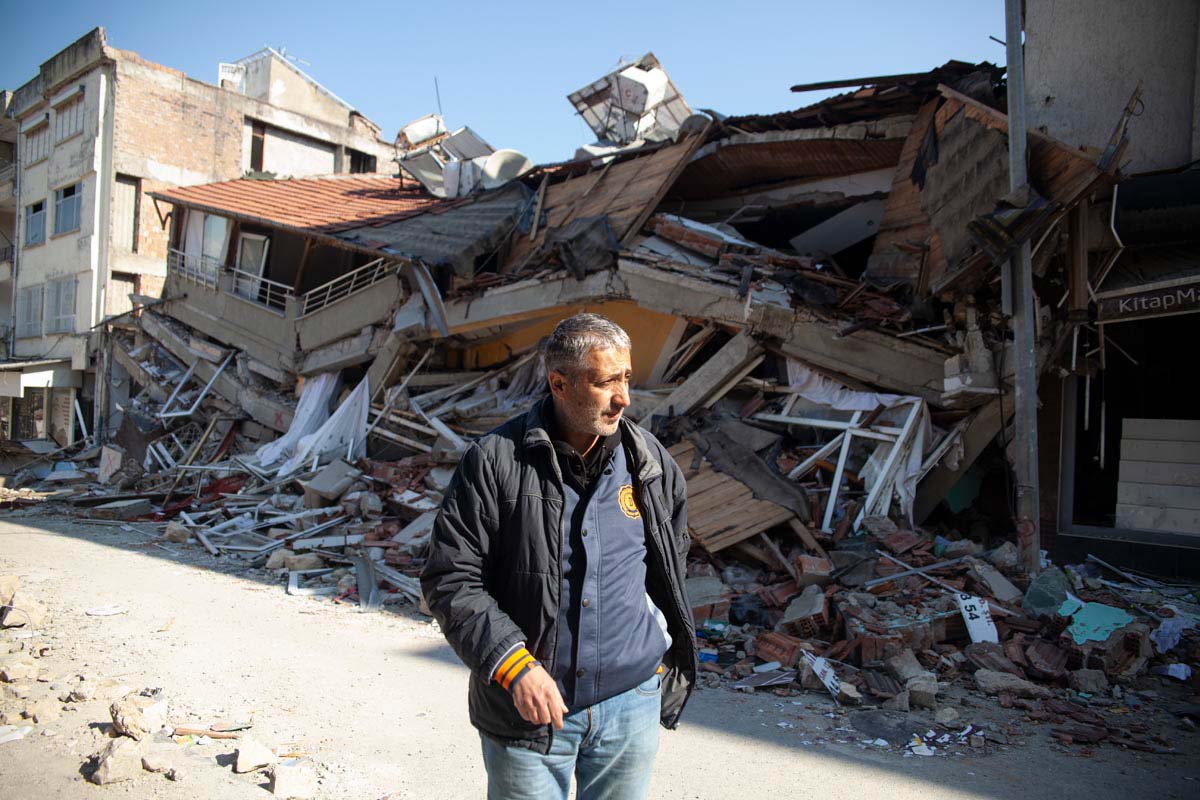
This man sat by his neighbours for days, trapped under the building behind him in Hatay, waiting for a rescue to come and lift the collapsed floors from them, but no one came, and their voices one by one became silent, killed by the freezing nights and dehydration.
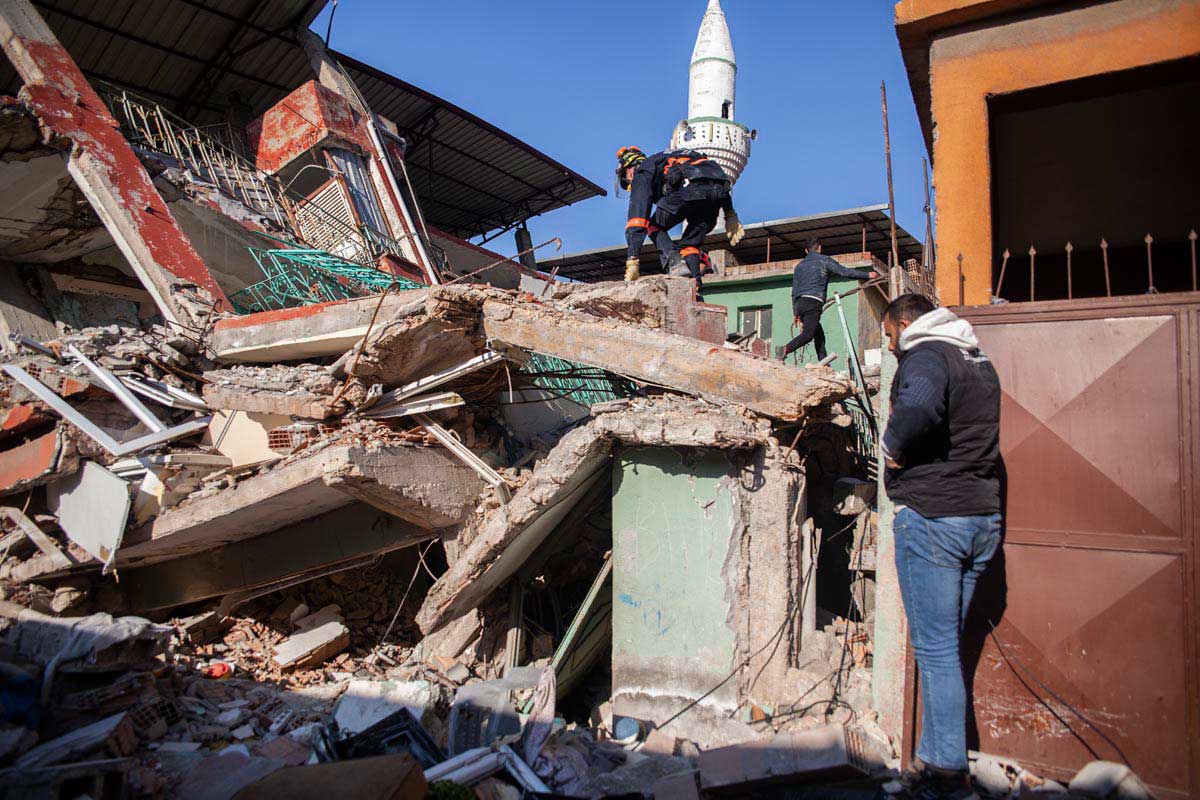
Using local resident's intel, the Australian rescue team maps access points to bodies which need to be retrieved for burial in Hatay.
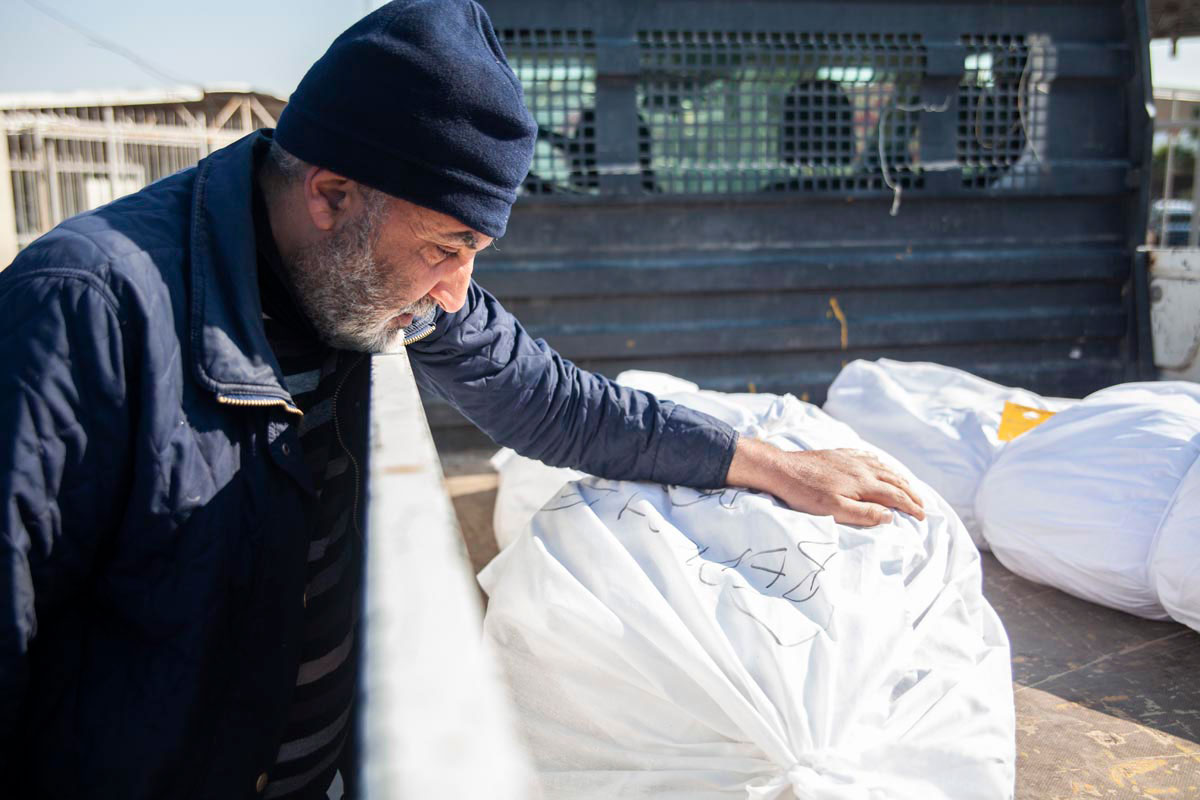
A Syrian man bids farewell to another of his family killed in the earthquake in Turkey.
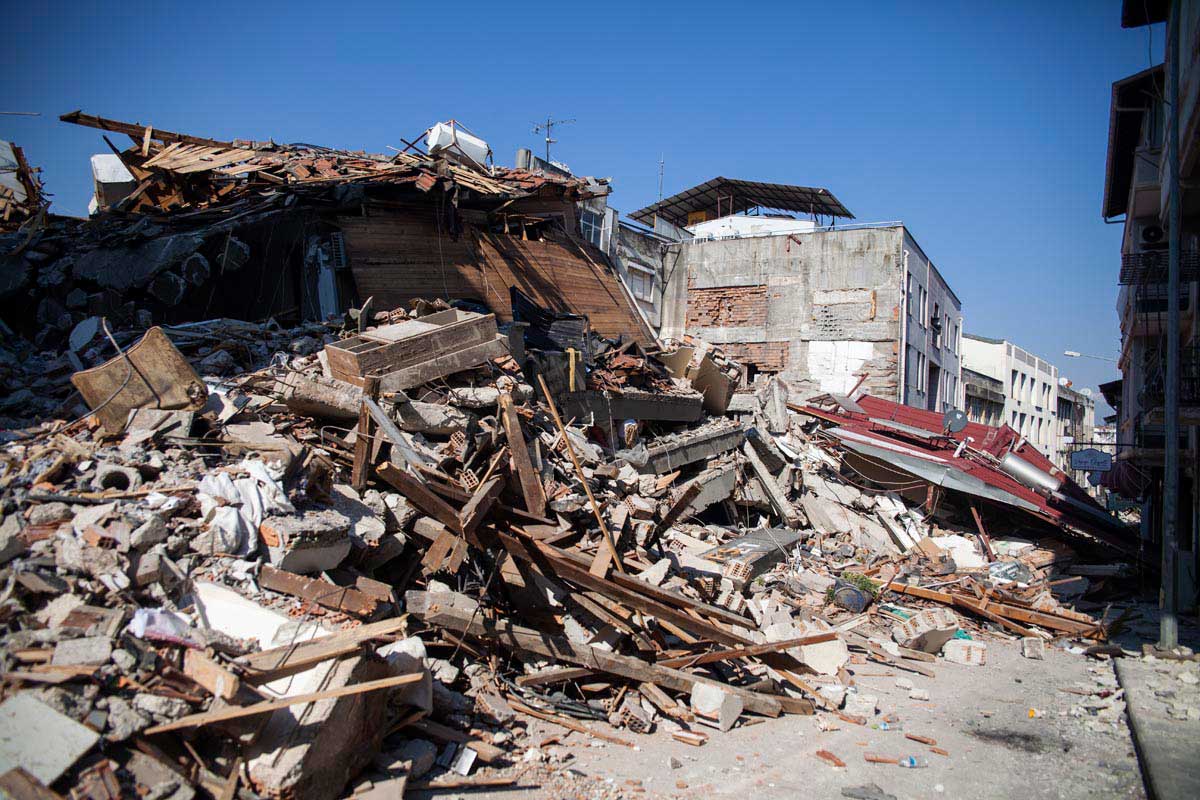
Many streets are blocked by crumbled houses in the city of Hatay following the earthquake. Electricity and water sources are cut off.
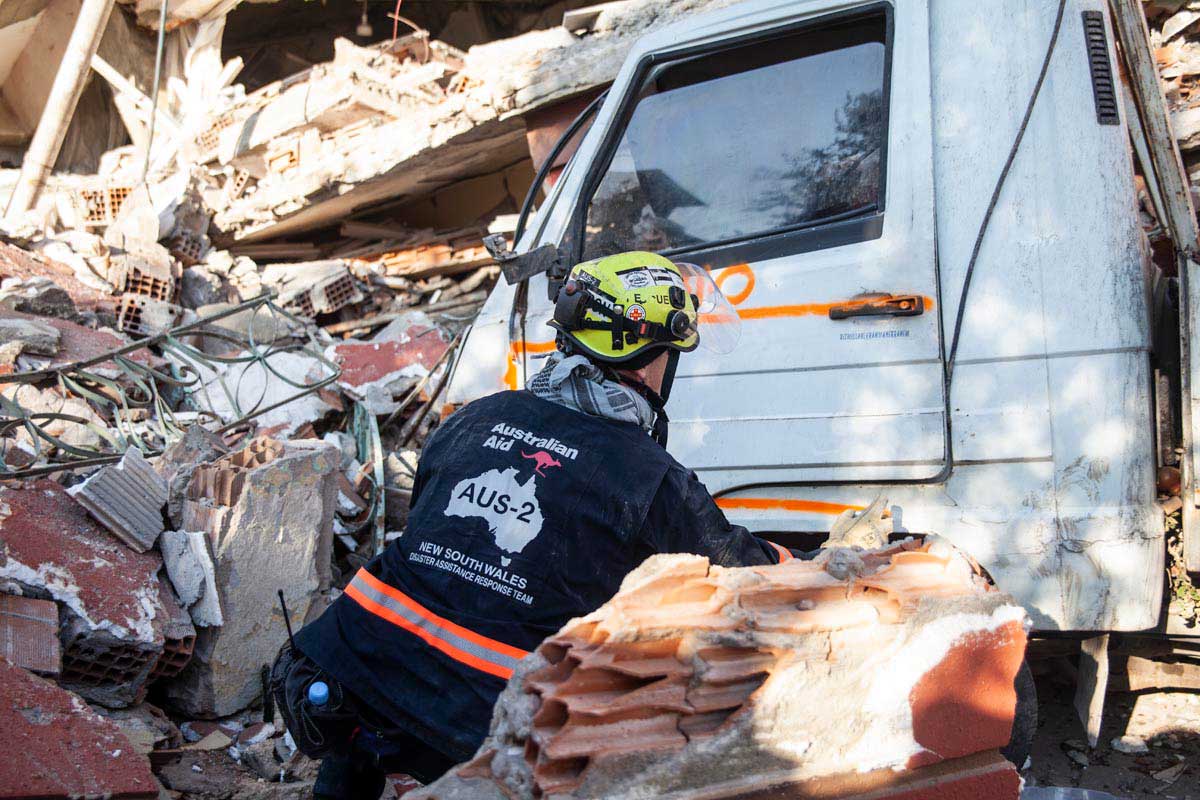
An Australian rescue member marks a truck in front of a building with an internationally recognised sign to signal to other teams that this site has been assessed.
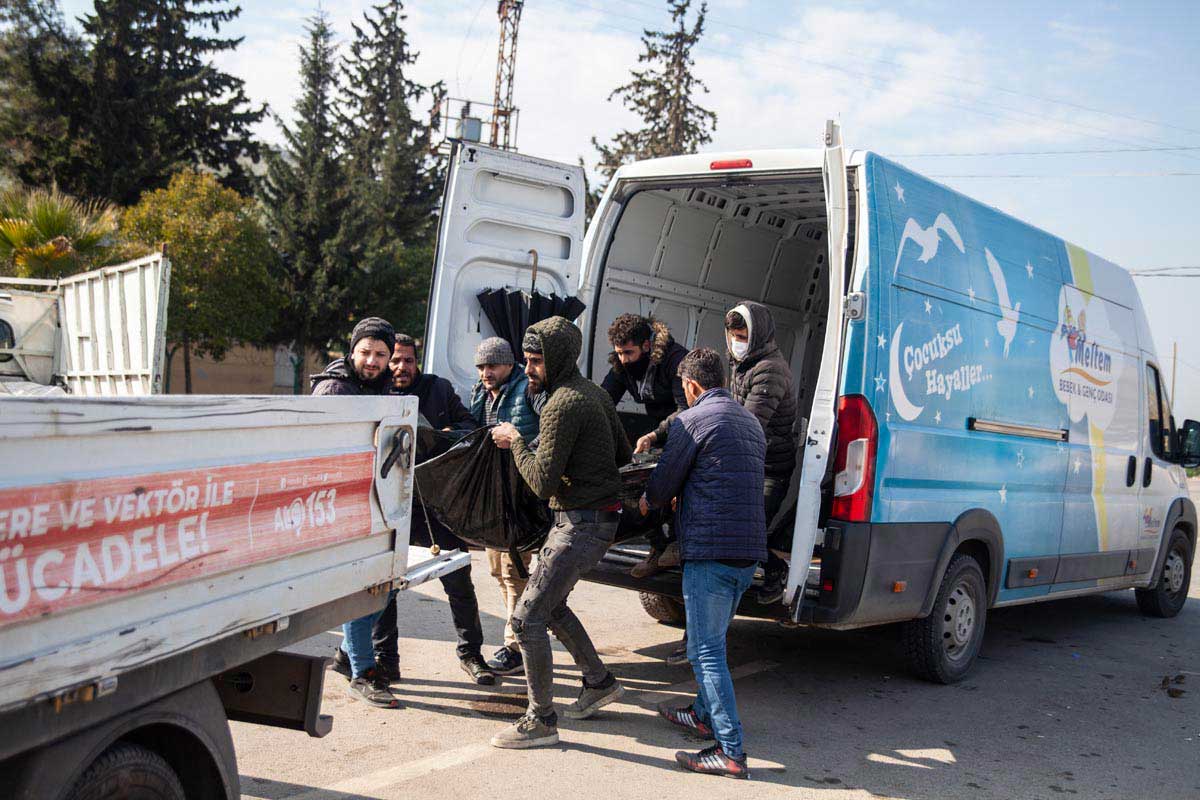
The incongruous sight of body bags being unloaded from a van usually used to deliver baby furniture.
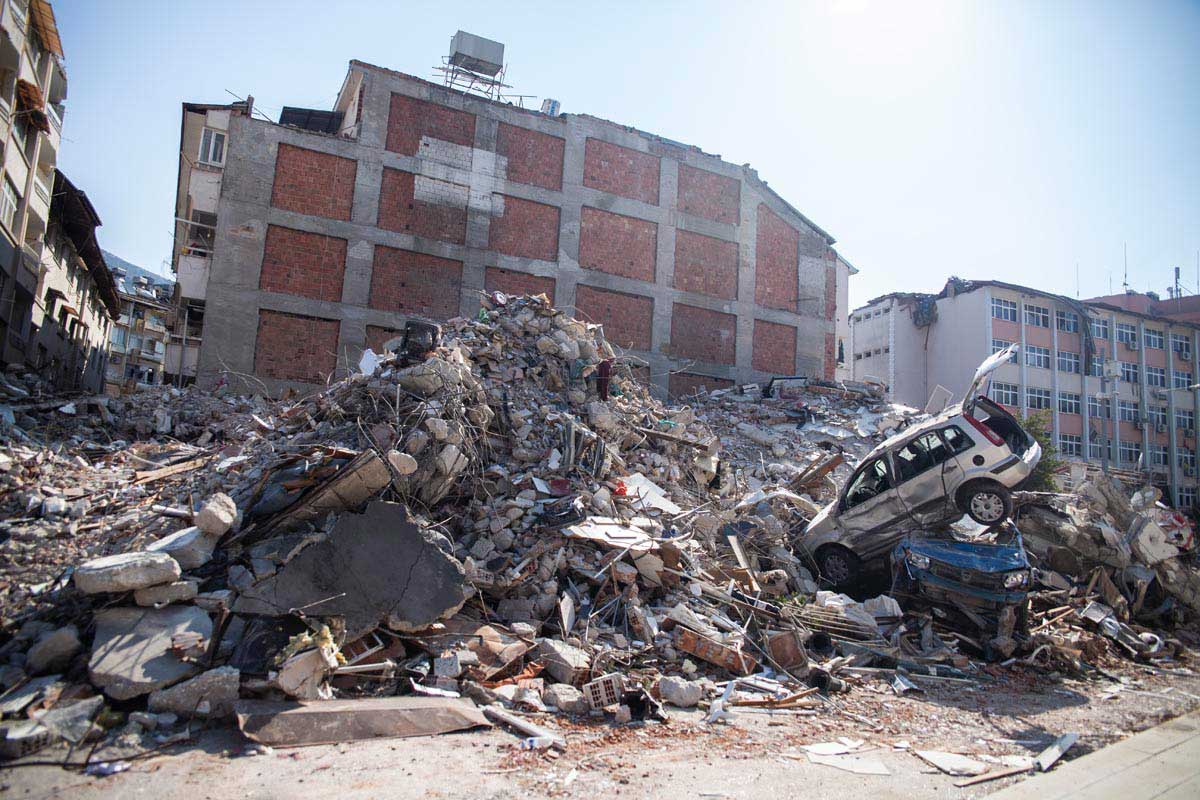
By the looks of the way the rubble of this block sits, this site has already been scraped by machinery and hands to rescue survivors and retrieve the deceased.
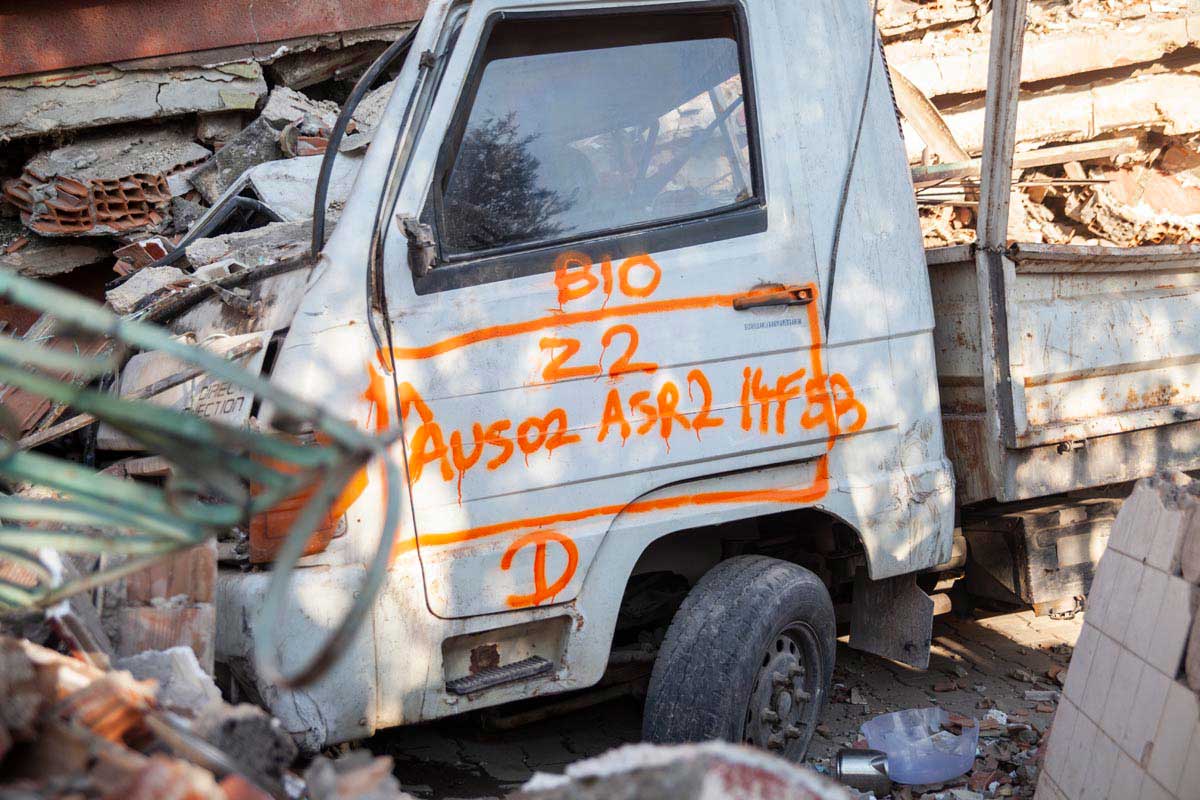
A truck marked by an Australian rescue team with an internationally recognised sign to signal to other people that this site has been assessed.
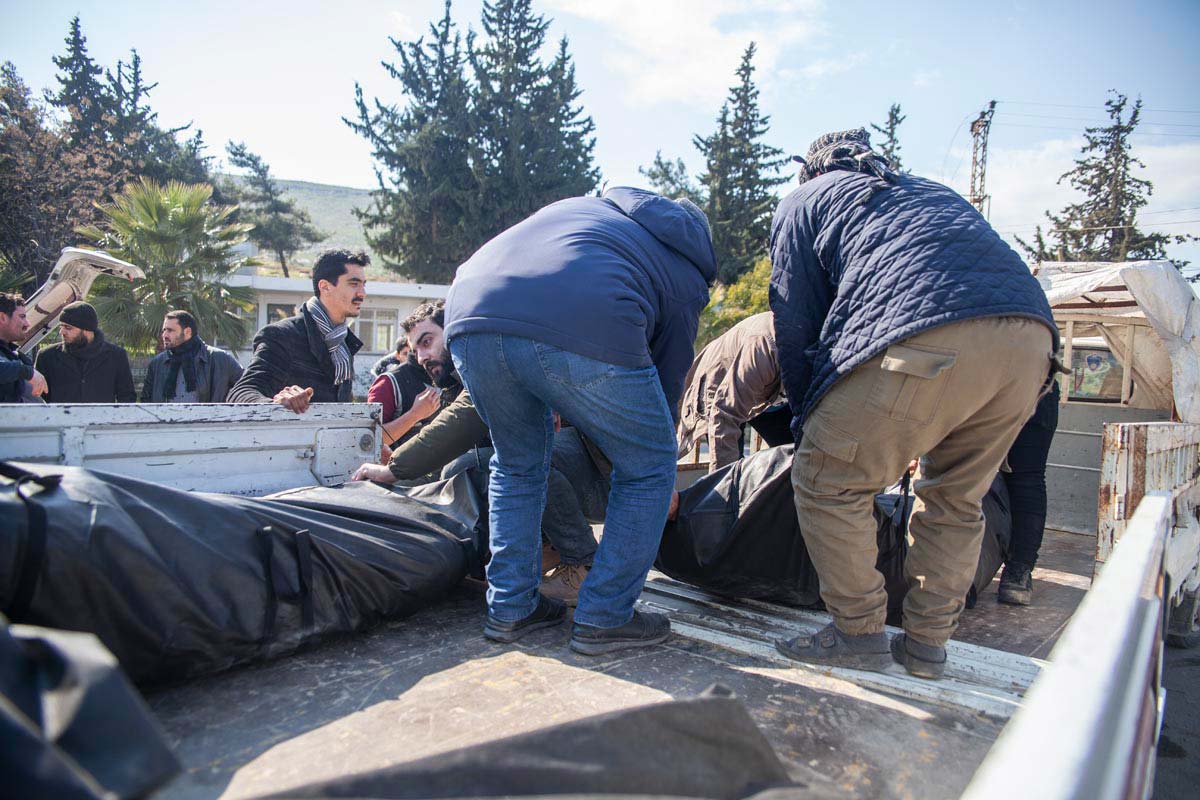
Every five minutes, it seems, a new vehicle arrives at the Bab al Hawa border crossing, loaded with up to 10 bodies – some bags seem to have more than one person inside.
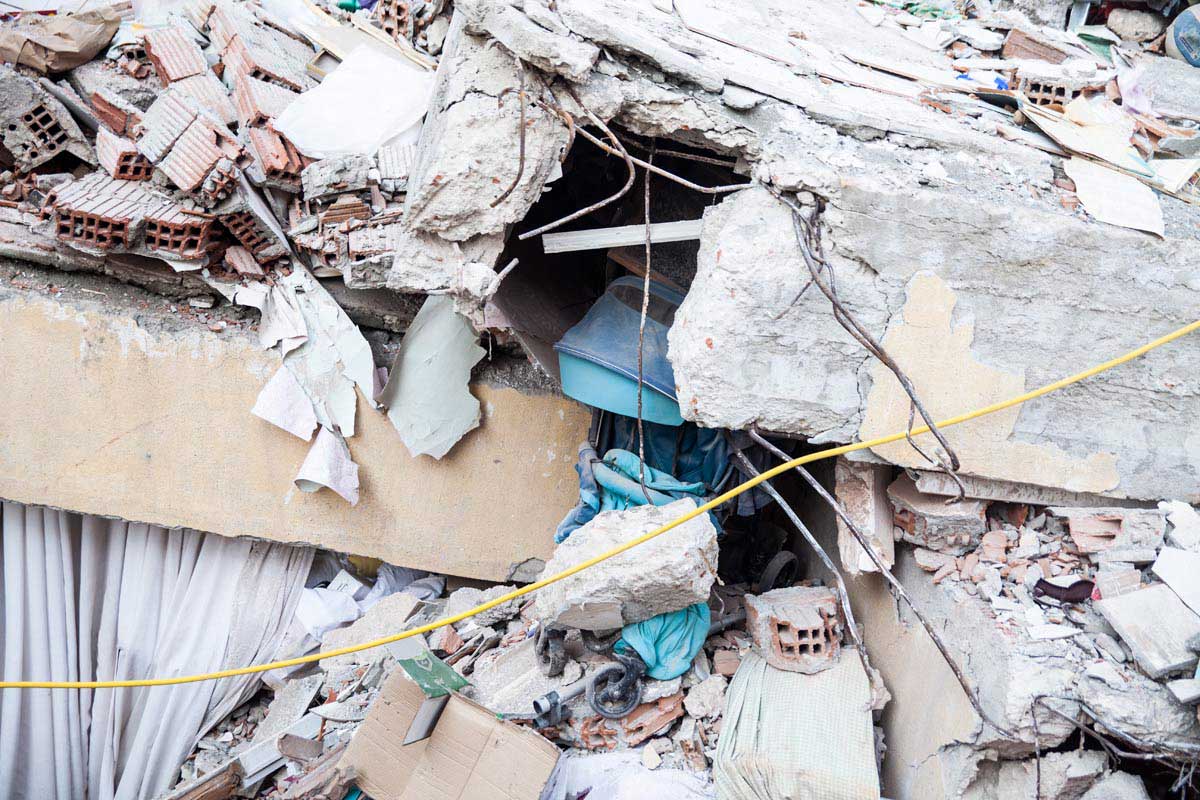
A pram caught in a collapsed building, a grim reminder how young some of the victims of the earthquake were.
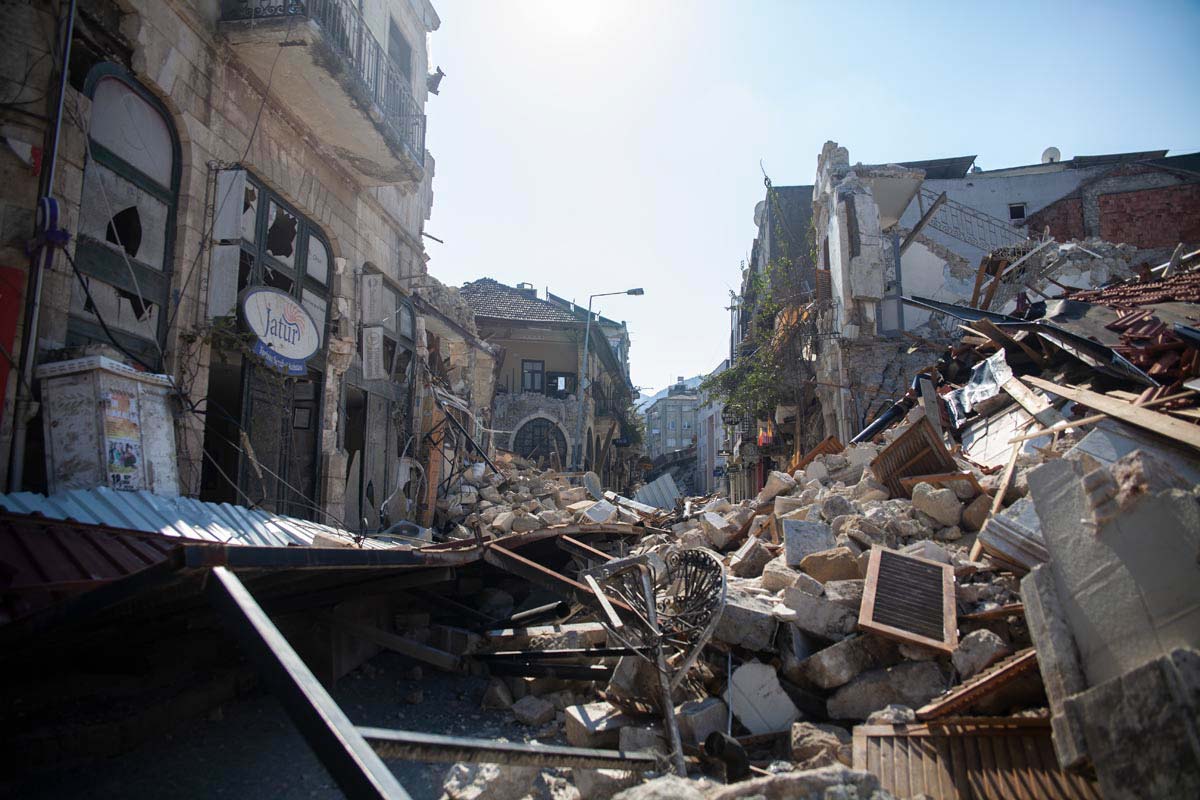
The old streets of Hatay, businesses and livelihoods destroyed.
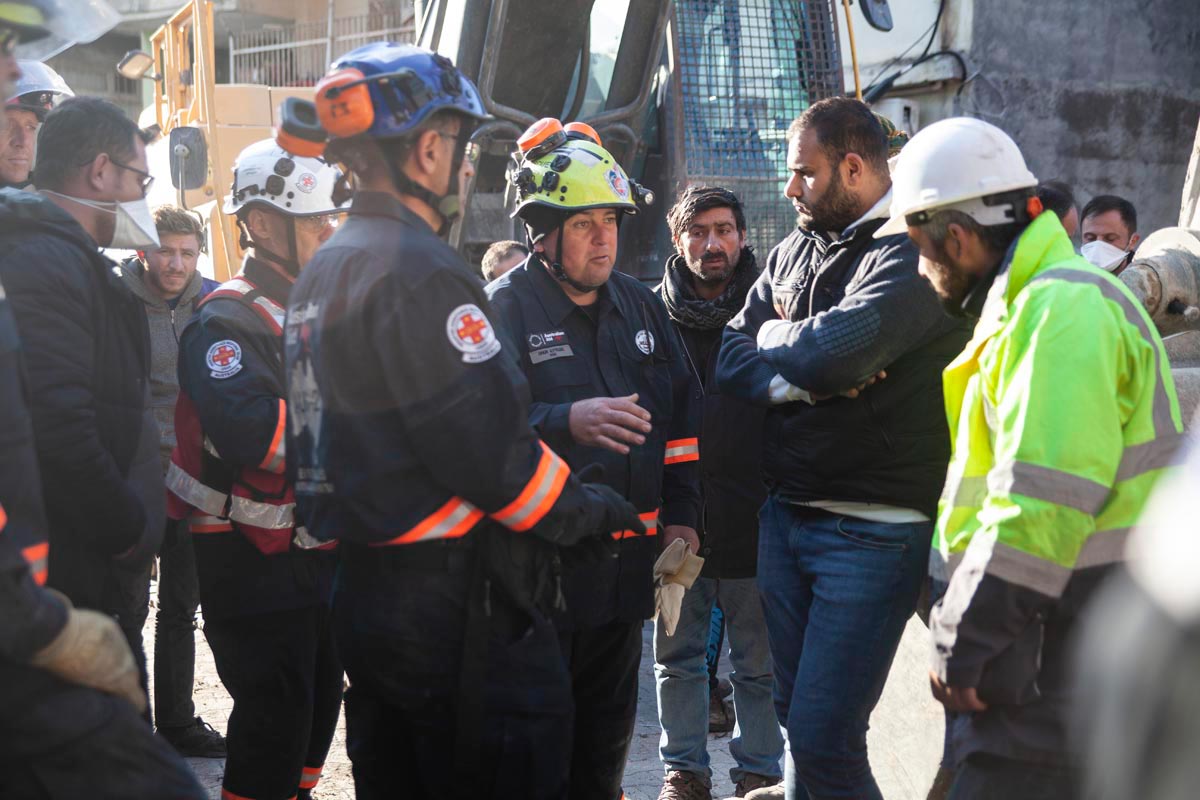
After assessing a building, the Australian team explains to family members how the bodies of those killed will be extracted. They will have to wait another day to bring an excavator.
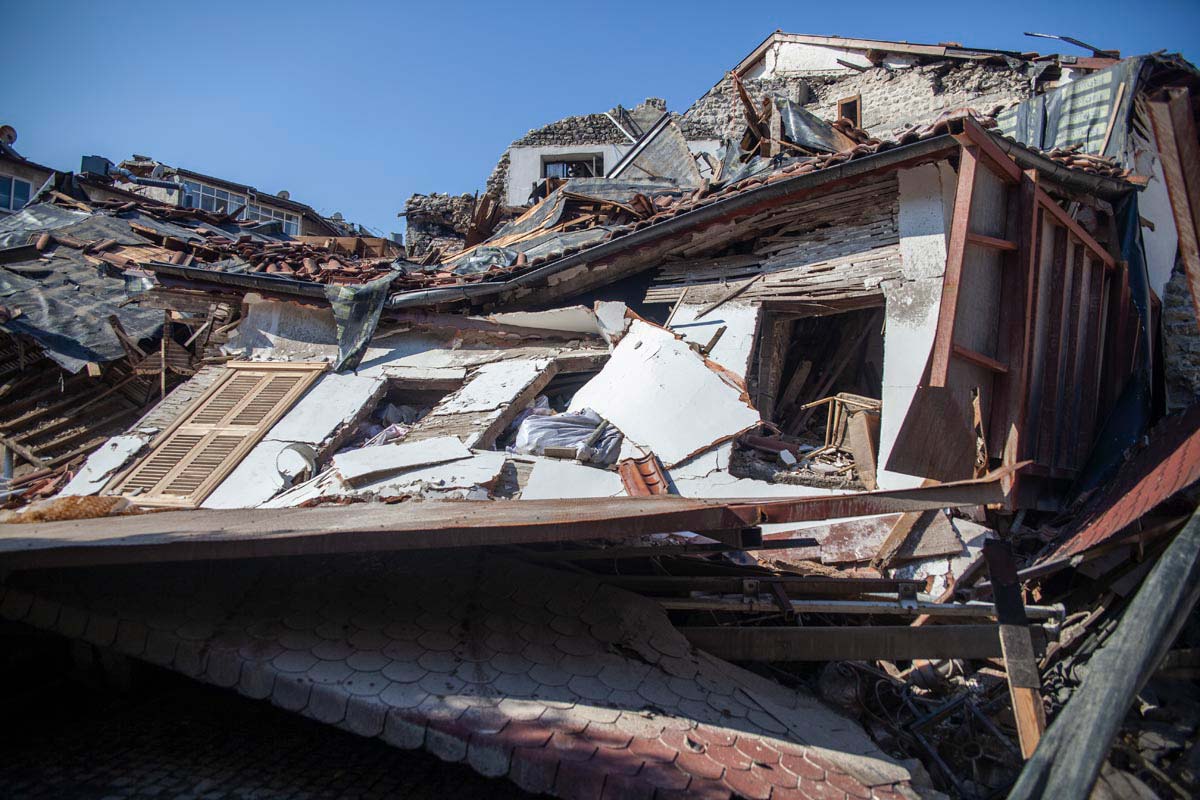
At least four million buildings in south Turkey were affected by the 7.8 magnitude earthquake.
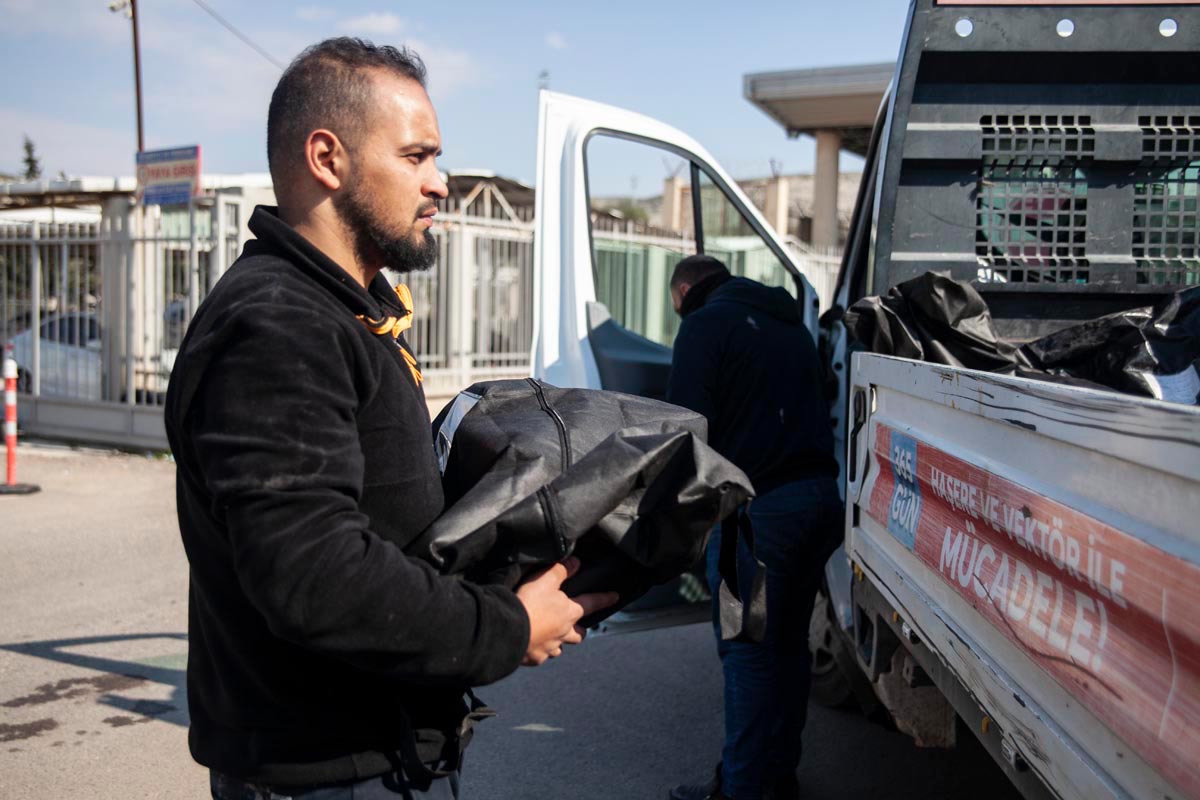
One of the Syrians killed and now transferred across the border to be buried was as young as eight months old.
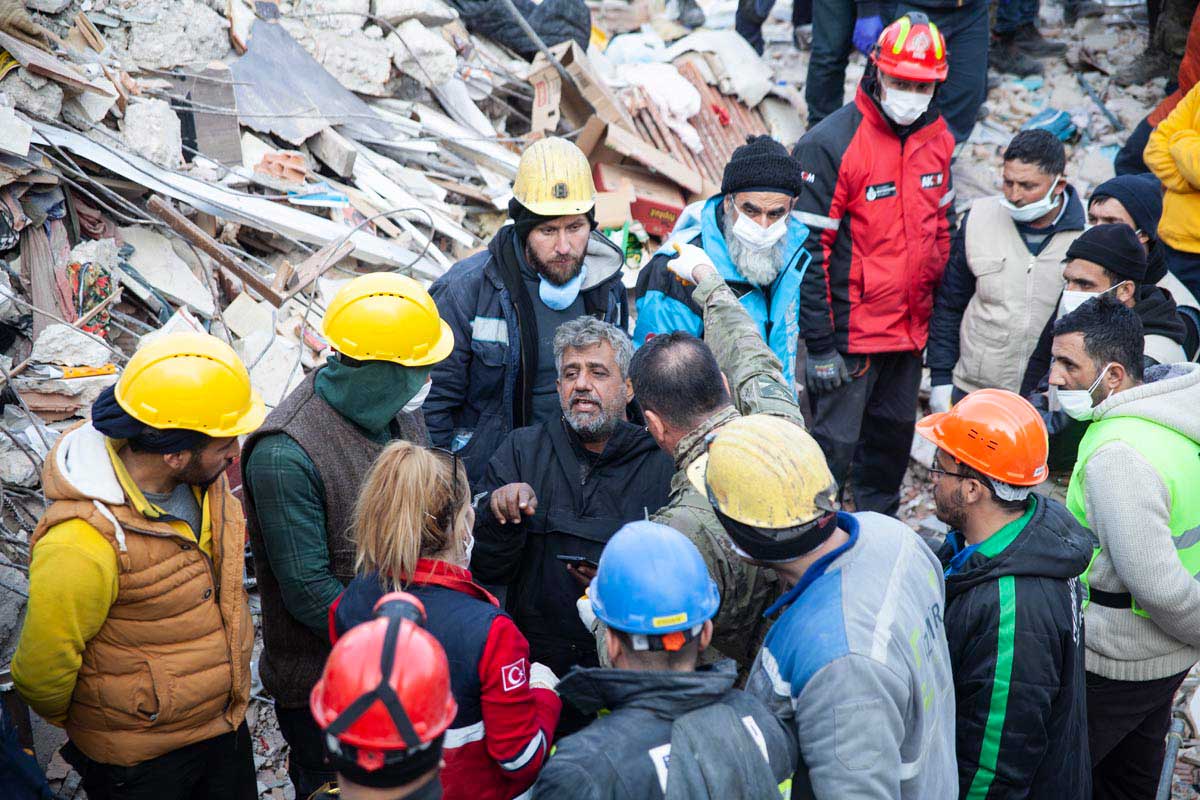
A family member speaks to volunteer rescue workers, saying he heard the cries of his niece from under the rubble the previous night.
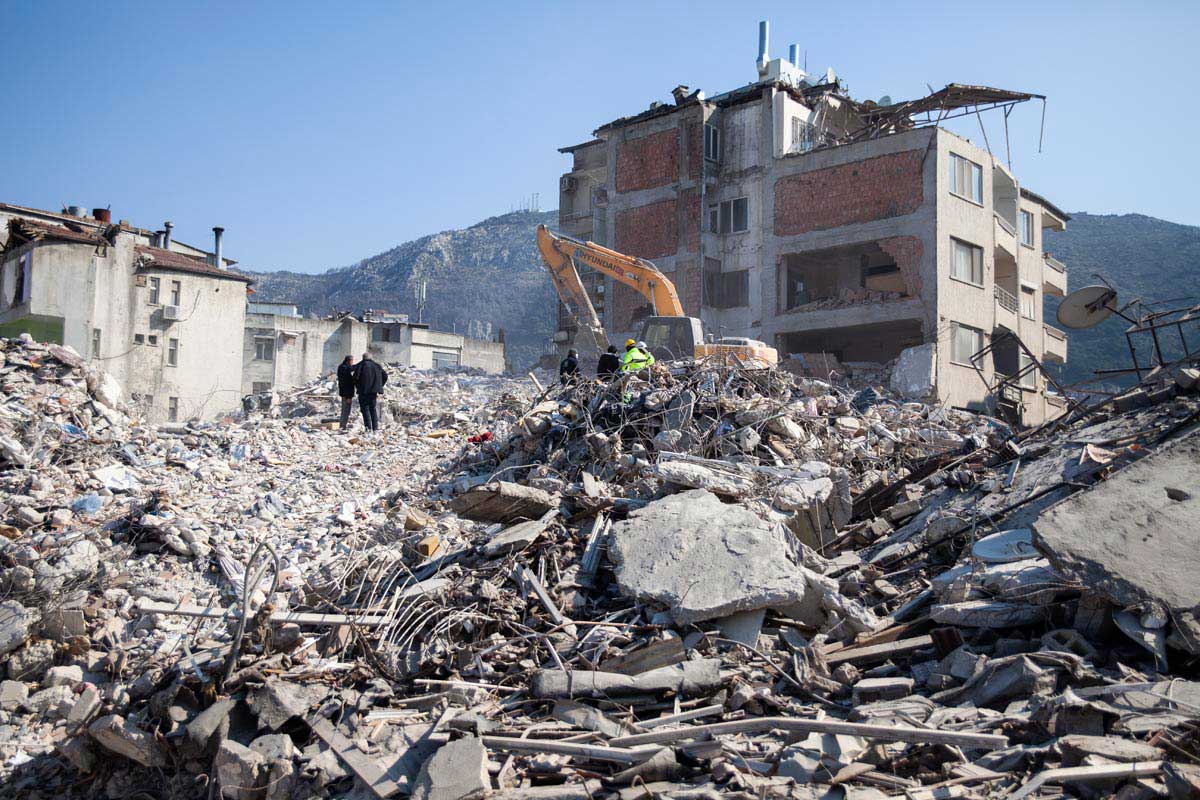
Half the street becomes a dumping ground for rubble moved from other excavation sites in Hatay.
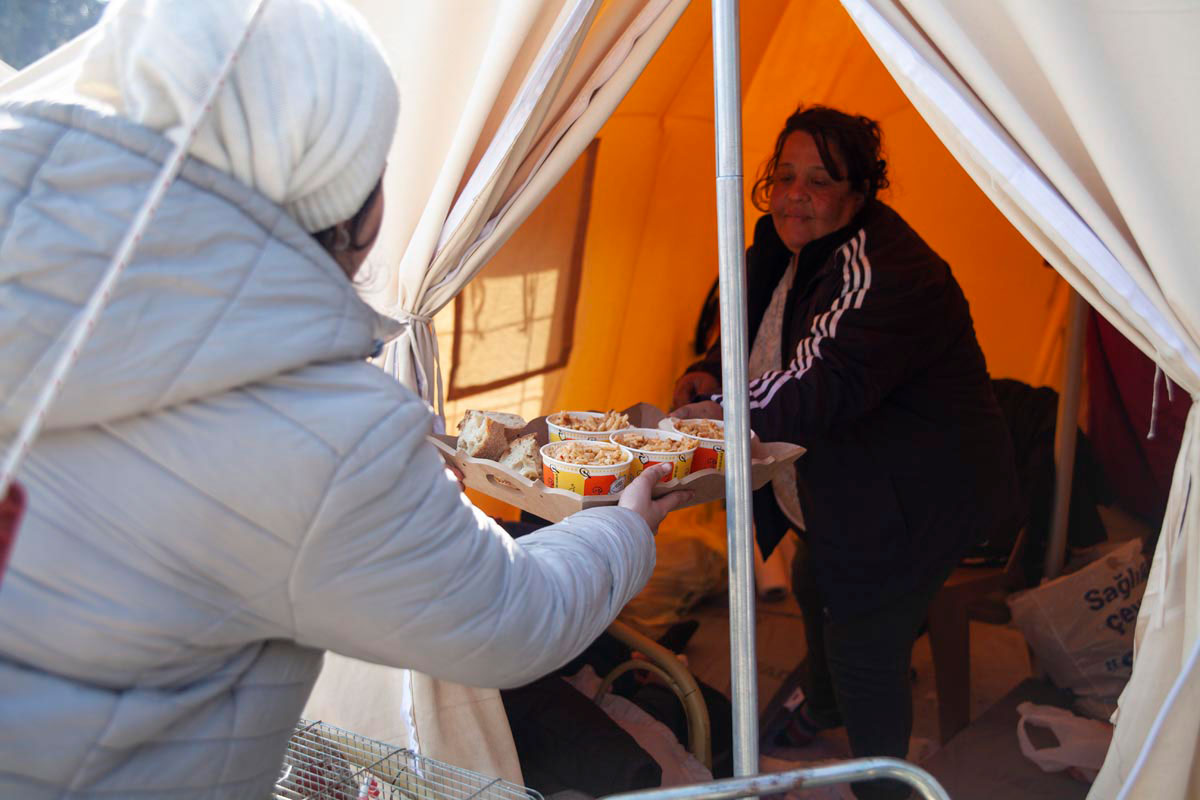
Food aid is delivered to families who lost their homes in the earthquake in Hatay and are now forced to sleep in the streets or tents during winter.
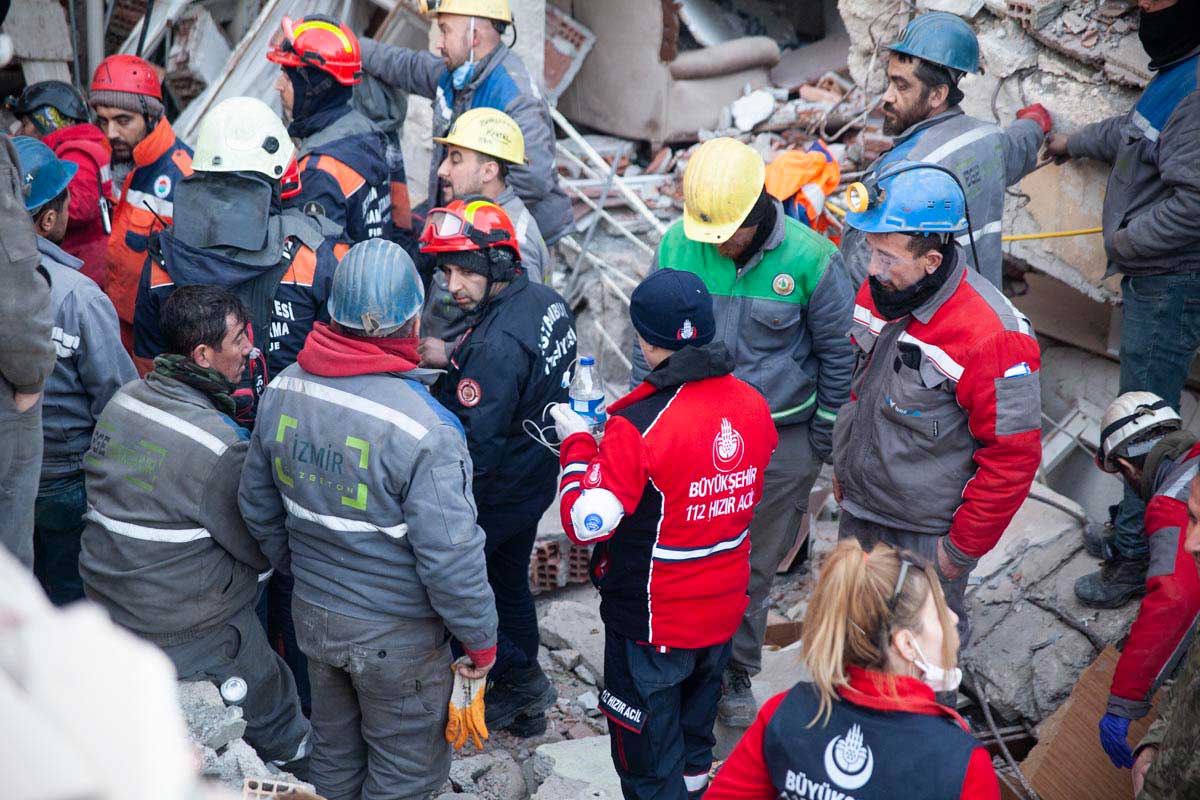
Water is delivered to the 16-year-old found alive after being trapped for nearly a week since earthquakes struck southeastern Turkey and northwestern Syria.
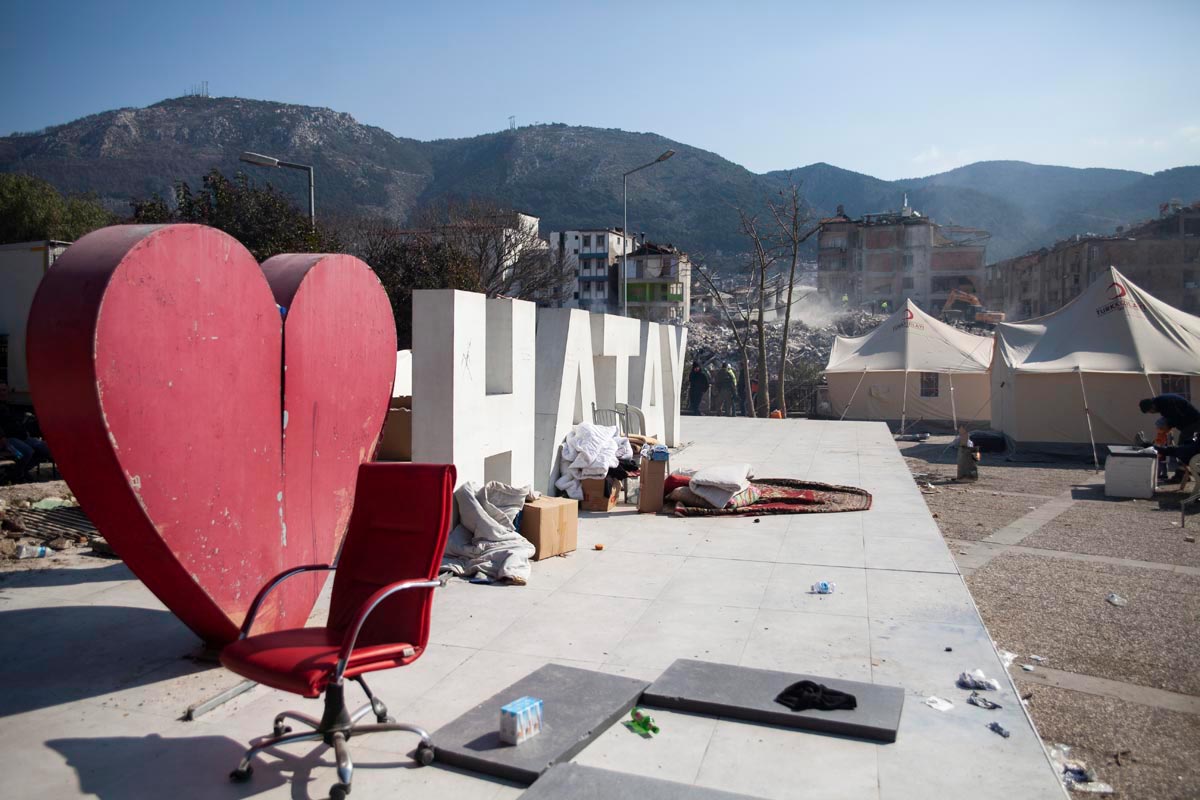
The main square in Hatay, now set up with tents for displaced families; in the background excavators work continuously to find survivors in collapsed buildings.
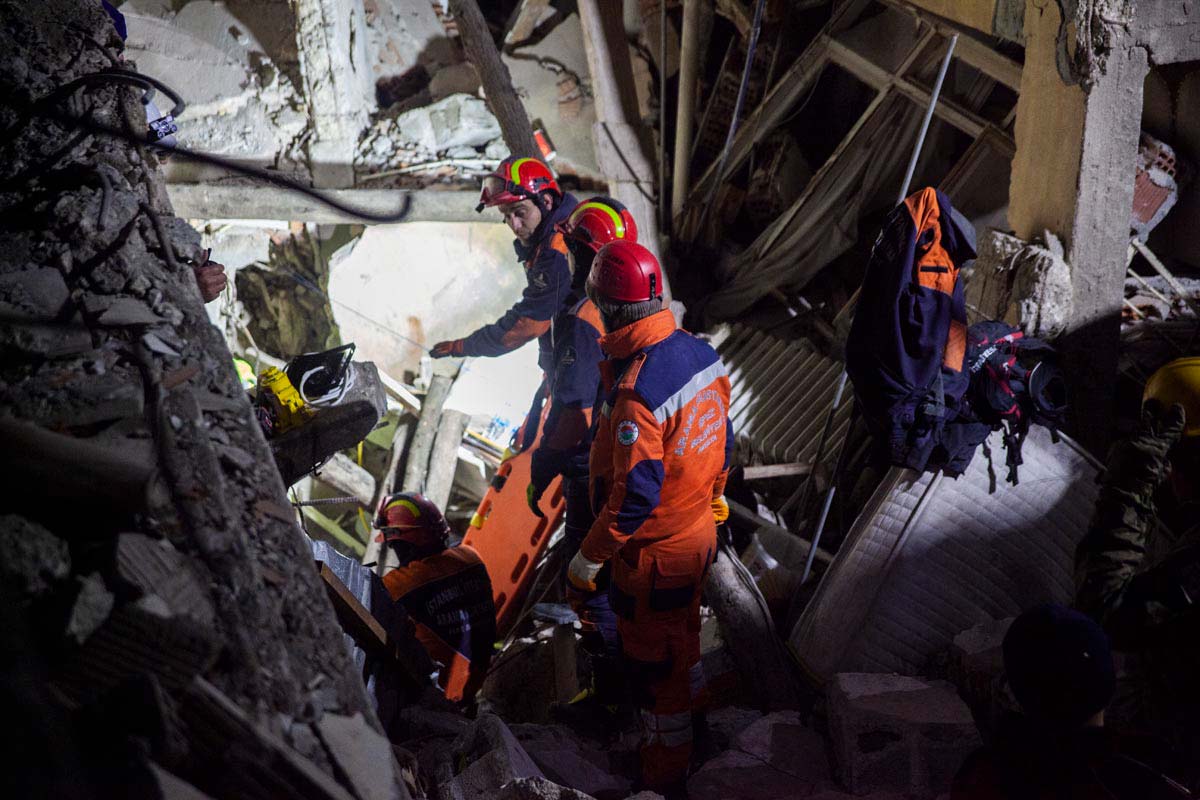
Volunteer firefighters prepare an exit point for a girl trapped in the basement of an apartment block.
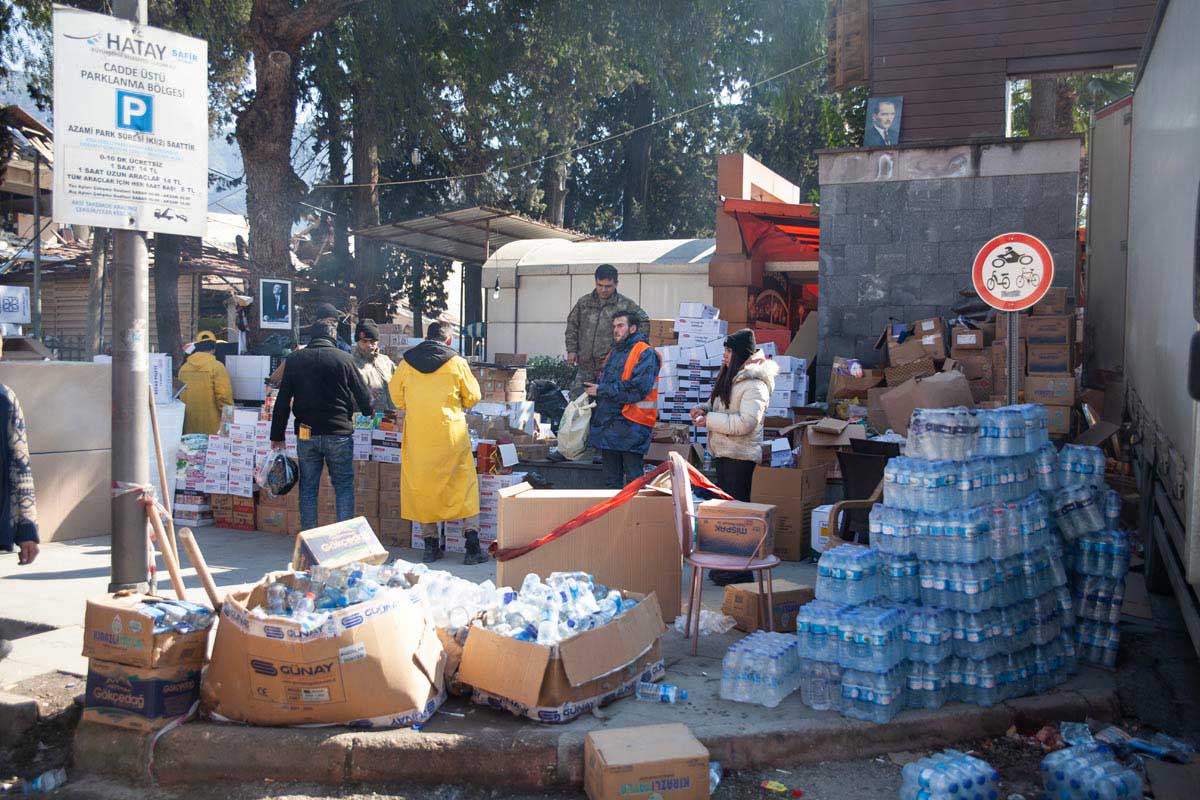
Food and water distribution stations are set up in the streets of Hatay, monitored by the army.
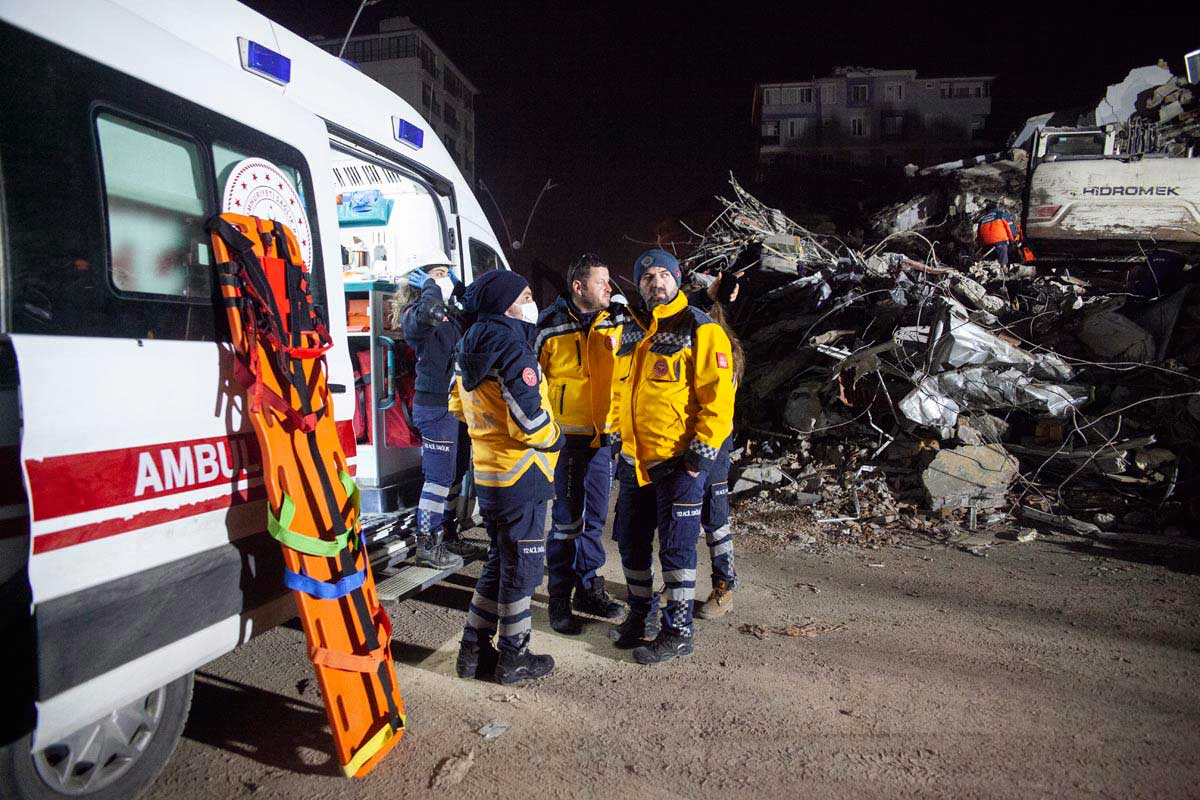
Paramedics on standby late into the night after being informed someone is possibly alive under the rubble.
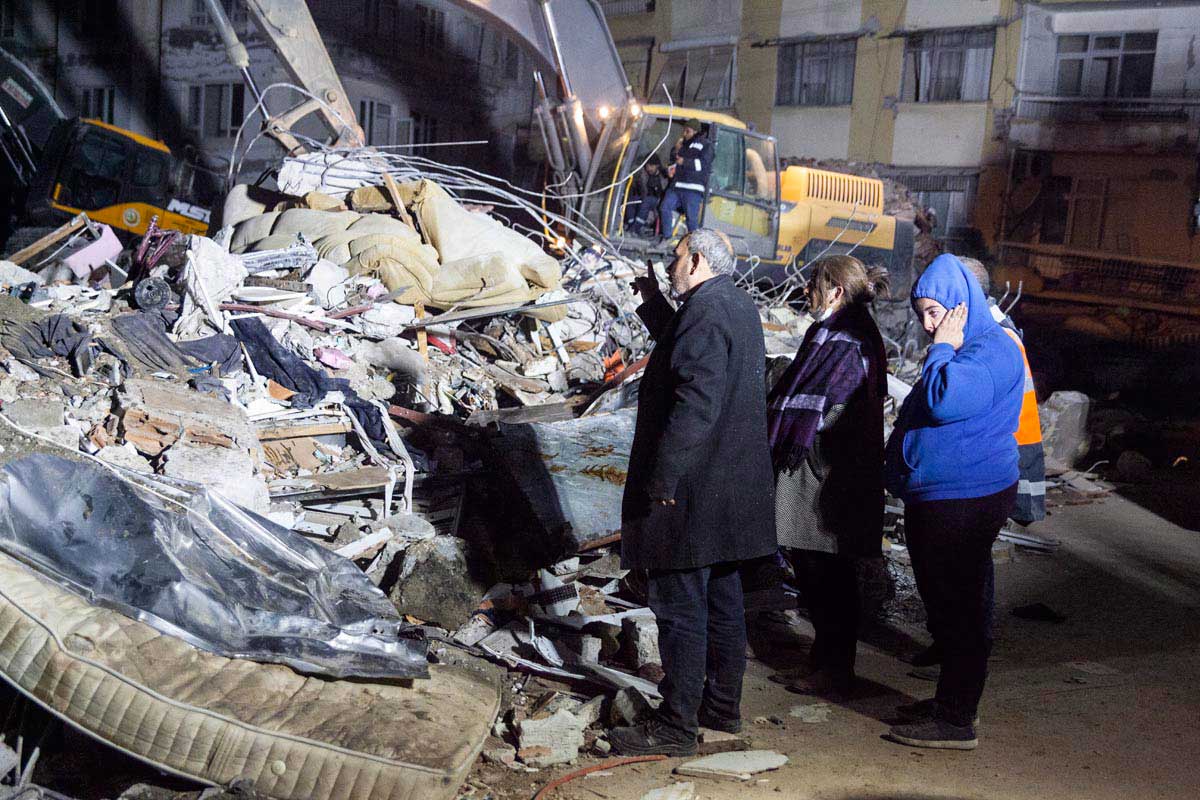
Family members wait in front of a destroyed house in Hatay where their daughter and sister was trapped after being told she could still be alive.
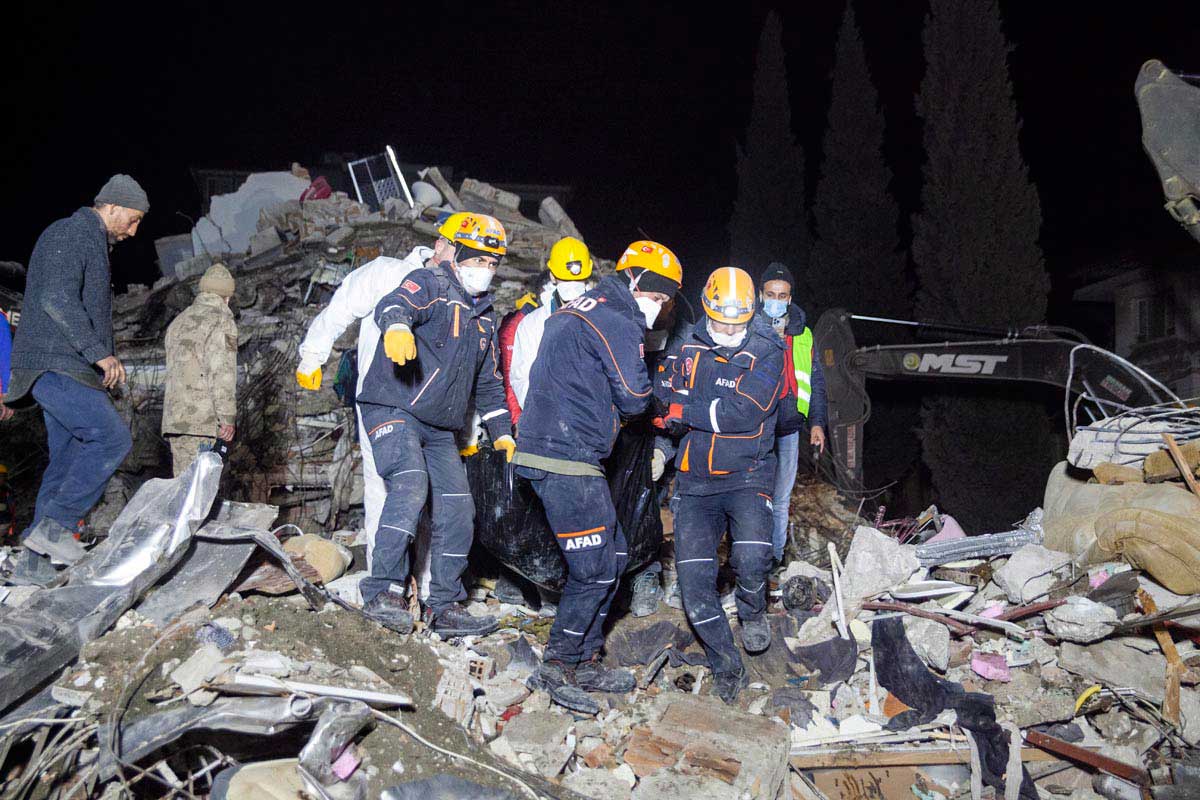
Six days after the earthquake struck, her body is brought out as security personnel usher the distraught mother away from the site. Over 50,000 people were killed in Turkey, 23,000 of those died in Hatay.
